Hot, colourful, different. Hola Colombia.
Green, hot, fruity. In Colombia, we experience the Caribbean vibe and get to know a completely new side of South America. A perfect stop on this long journey, which makes our senses perk up again.
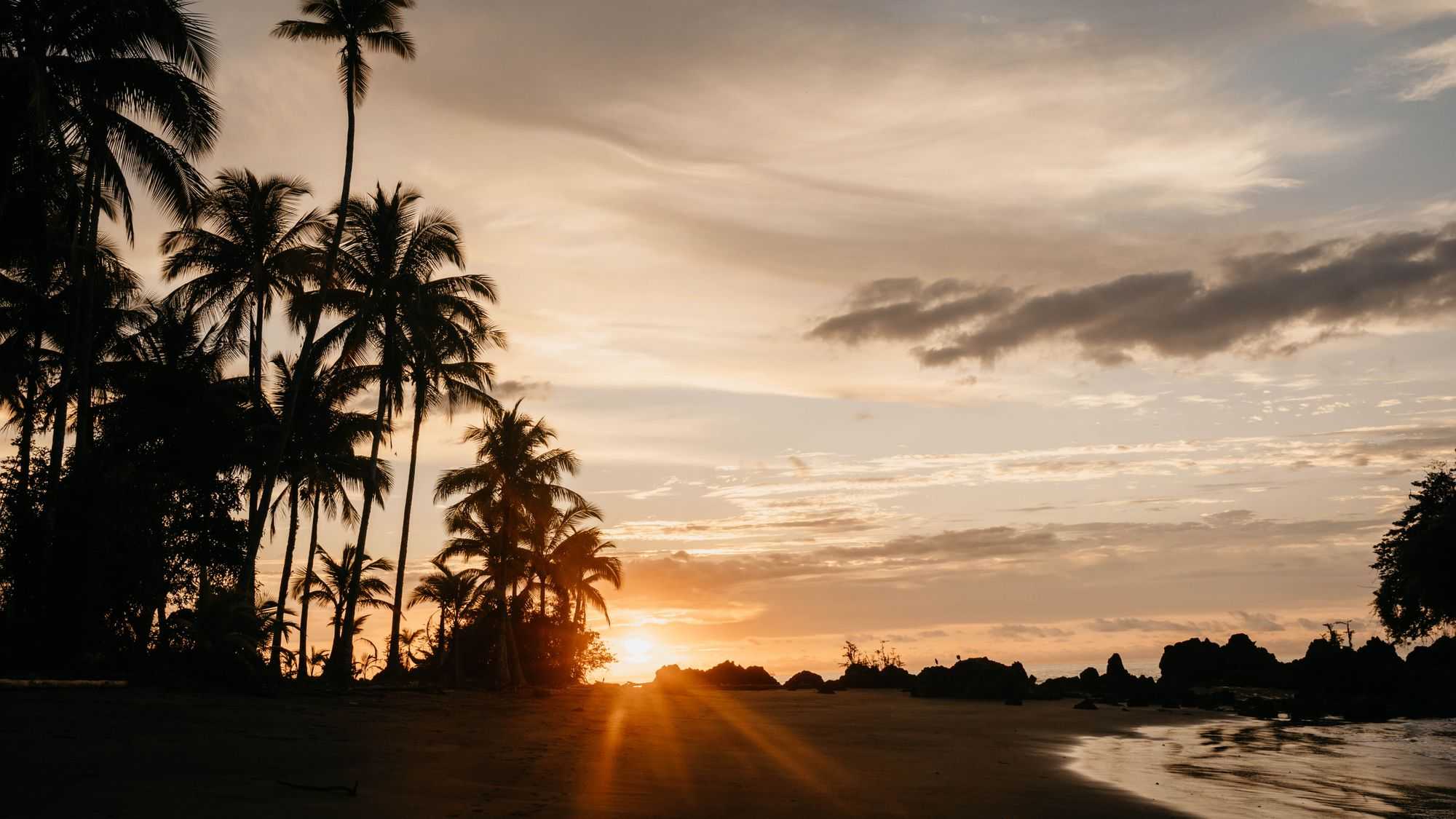
And suddenly we land in a new, for us still unknown world. Landing is the right word, because since we are now carless, we are forced to switch to other means of transport, and so we fly from autumn-warm Santiago de Chile to Cartagena on the Caribbean coast of Colombia. The first country in our second year of travel that is unknown to both of us.
And on the Caribbean coast, the first thing that hits us is the heat. After travelling for almost 8 months in mostly cooler climates, we are a bit taken aback by the high summer temperatures and the equally high humidity. As always, we have to find our way around in a new culture. Colombia has a bad reputation because of its past, but the security situation has improved drastically in the last 20 years, making it a popular travel destination. We also have to get used to the new climate zone at first and are therefore glad that we prioritised air-conditioning for our accommodation, which was spot on! Cartagena's old town impresses with its pretty colonial buildings, and is correspondingly swamped with tourists. The heat and the crowds don't let us stay here for long, but we enjoy the evenings in the Getsemaní quarter. In the narrow alleys, everyone has set up a small bar in front of their house, music is blaring from all corners, street food fills the stomach and the mood is cheerful. In this corner we also celebrate Ben's birthday with the best Italian food.
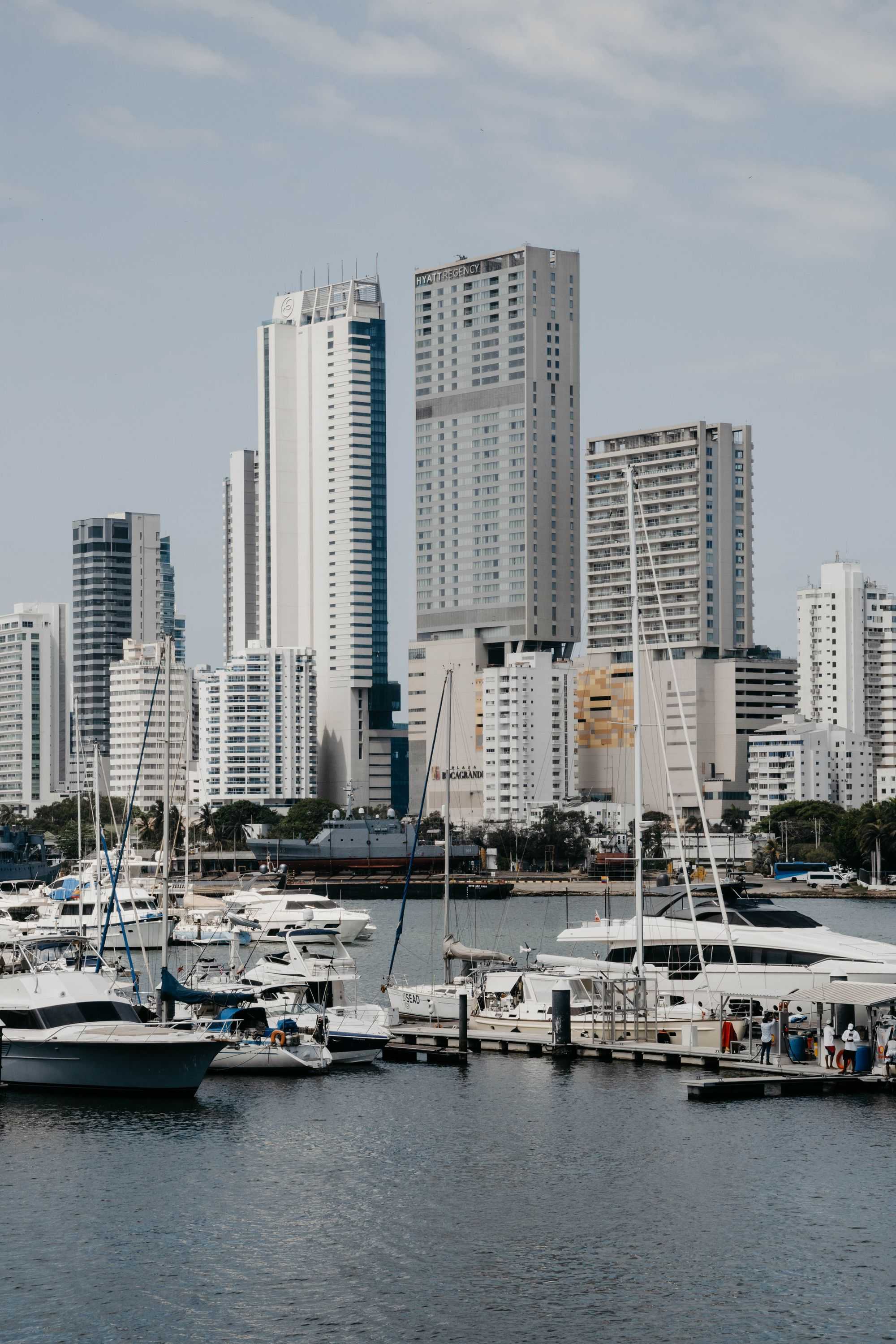
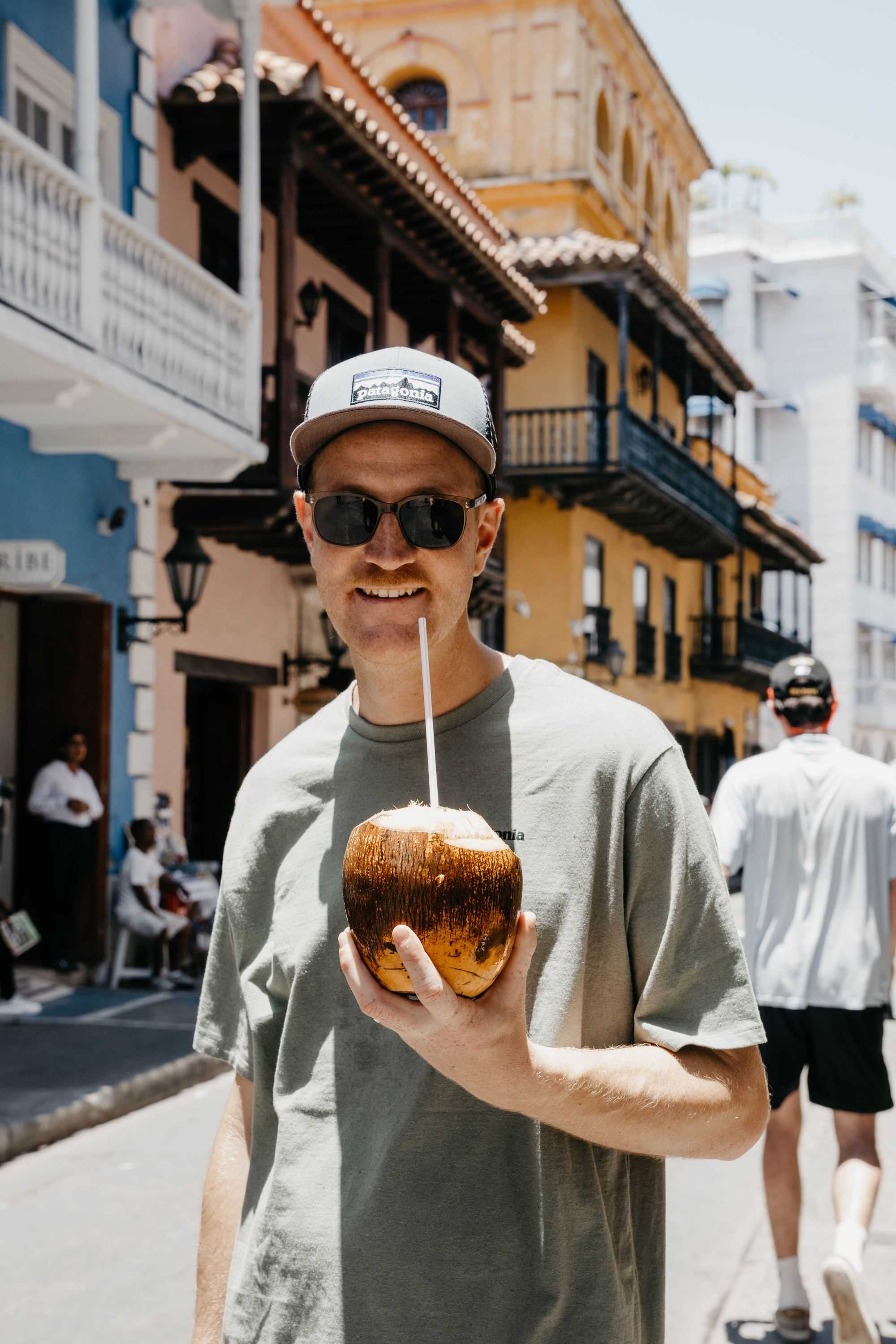
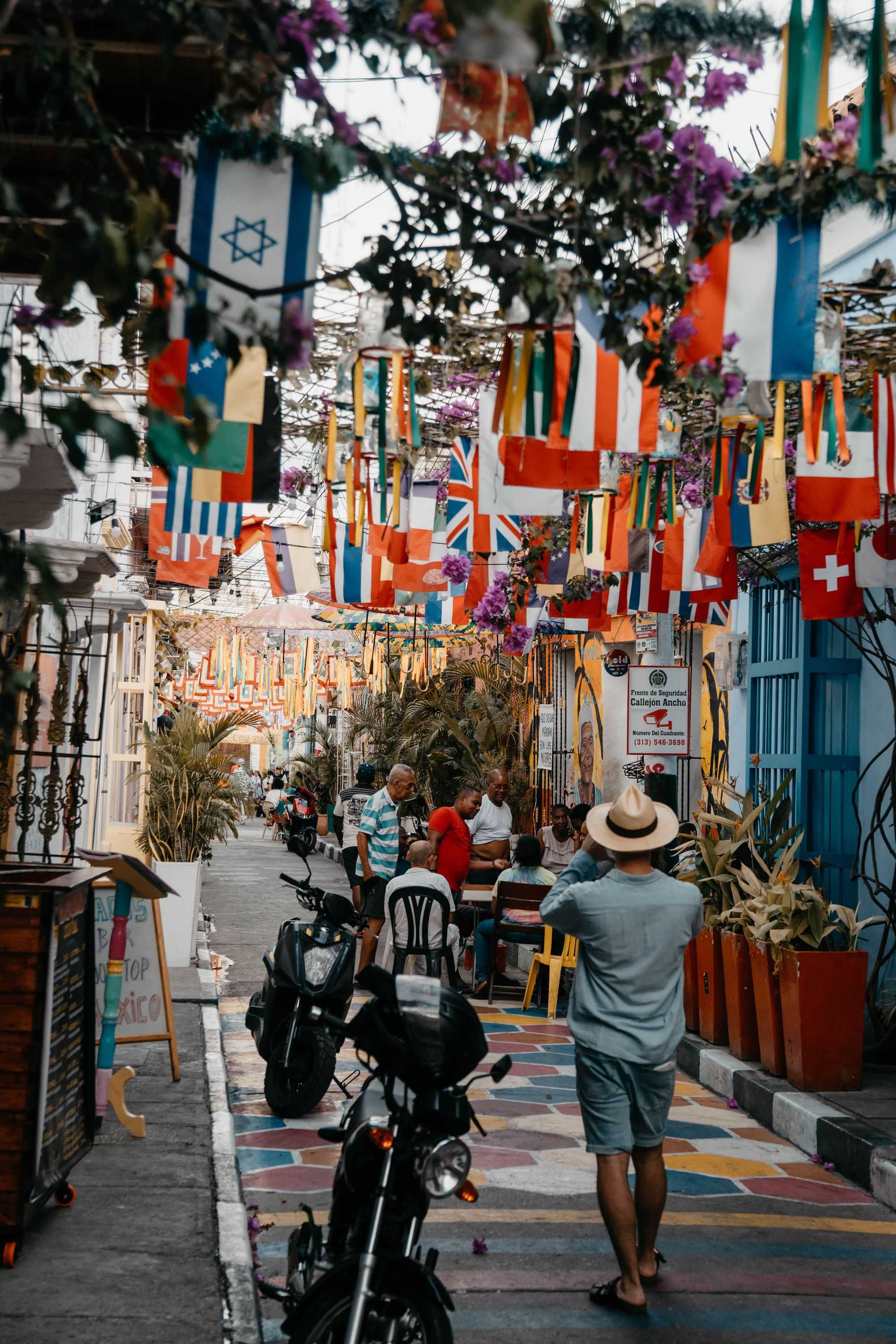
A little further east on the Caribbean coast is the Tayrona National Park. We are now travelling as classic backpackers, which means a lot of bus driving. On the one hand, we are happy because the Colombians' driving style is wild and you don't want to drive yourself, but on the other hand, some of the trips are really unpleasant. On the way to our accommodation, we have the pleasure of watching a thousand clips of other tourists in our chauffeur's taxi and of course we also have to record an obligatory video for his collection. After many barren regions, we enjoy the lush greenery that covers a large part of the country. Our accommodation is in the middle of the forest and we get a real jungle vibe. The Tayrona National Park is the best known in the country and protects a long stretch of coast with beautiful beaches. We really give it a go because we can't decide what we want to see and because we don't want to spend money on a mototaxi with totally exorbitant prices. In one day we visit all the beaches, which makes quite a tour. In fact, the beaches are fantastic, but some are a bit overbuilt with campsites and restaurants. A highlight follows shortly before the end, when we get to see a gang of monkeys up close. And another highlight follows when we jump into the pool of our accommodation, we have thoroughly earned this bath.
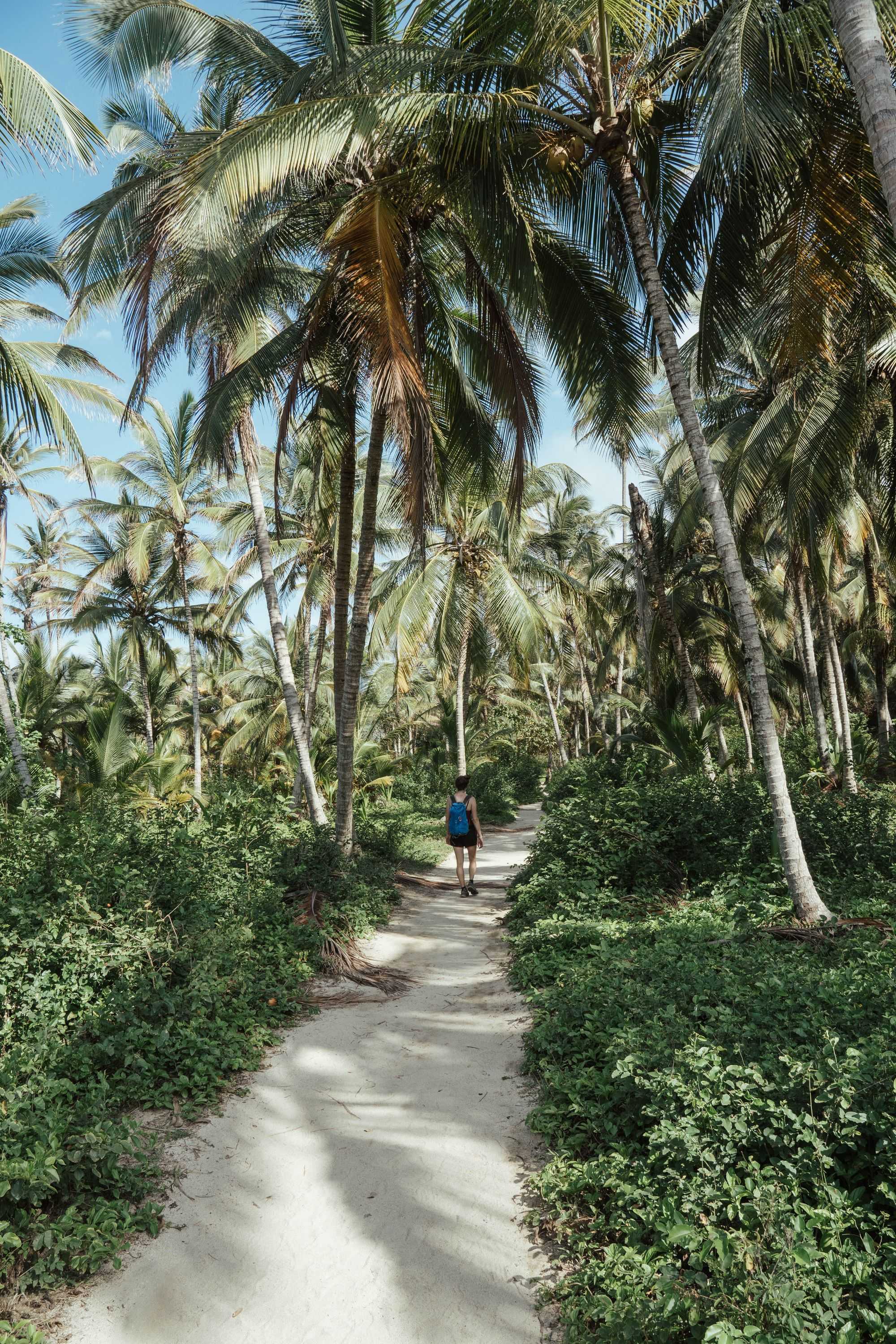

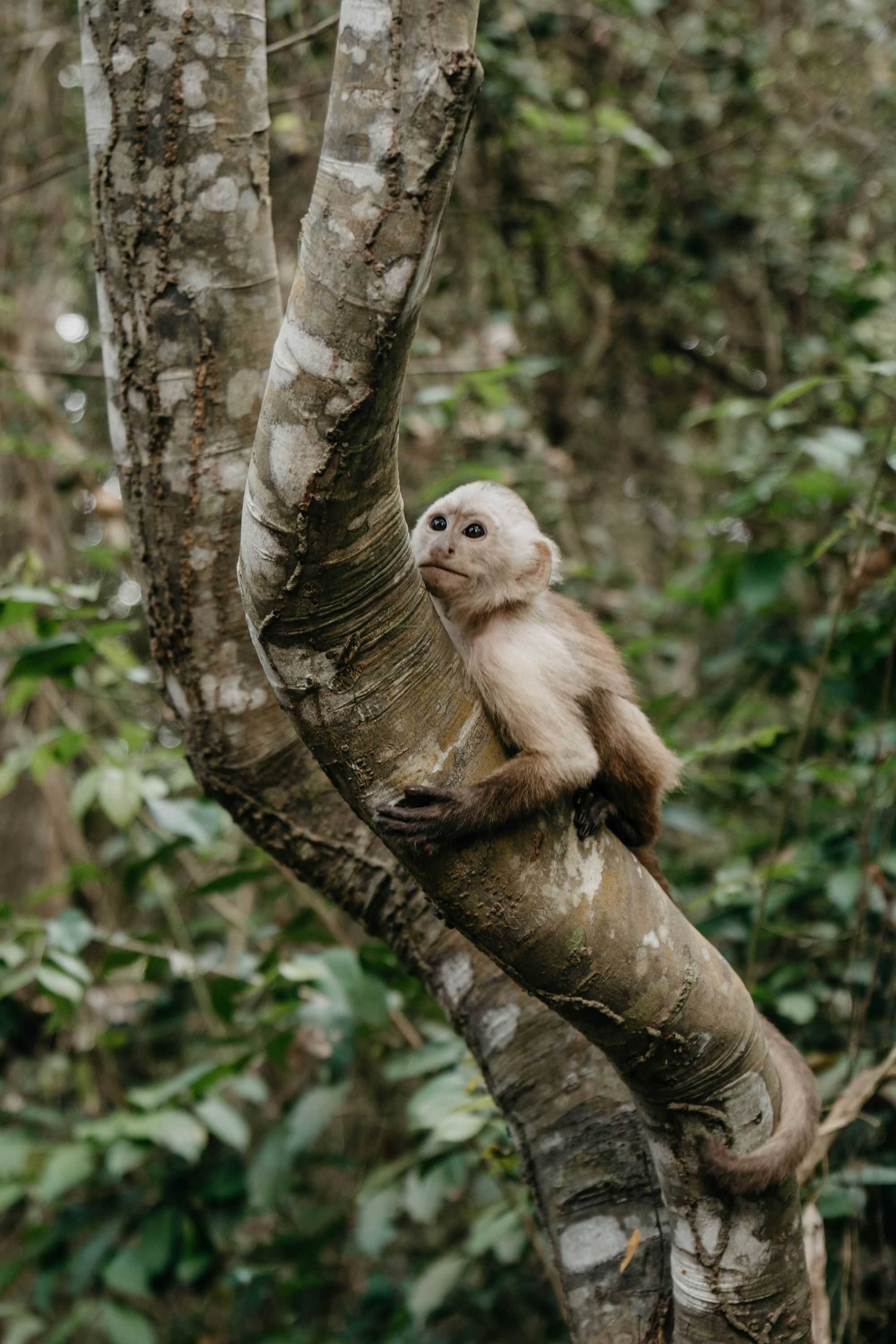
The next day we feel that we haven't done a hike of this magnitude for a while. Fortunately, we only have to take the minibus and drive a short distance to Palomino. The best thing here is that you just stick your thumb out and the minibuses stop right in front of your door, so you can just get off again wherever you want. A quick call to the chauffeur is all it takes. Hurray for the next air-conditioned accommodation, after we had an almost sleepless night before because it was so hot. It's the little things. Palomino is a small village on the coast that invites us to stay and enjoy a delicious meal. Exactly what we want. We spend the days in an air-conditioned room, on the beach, with good food and in nice company with Lena and Oli from Switzerland, whom we last met in Sucre. In the words of Swiss Singer Dodo: "Es fühlt sich a wie Ferie" (It feels like holidays).
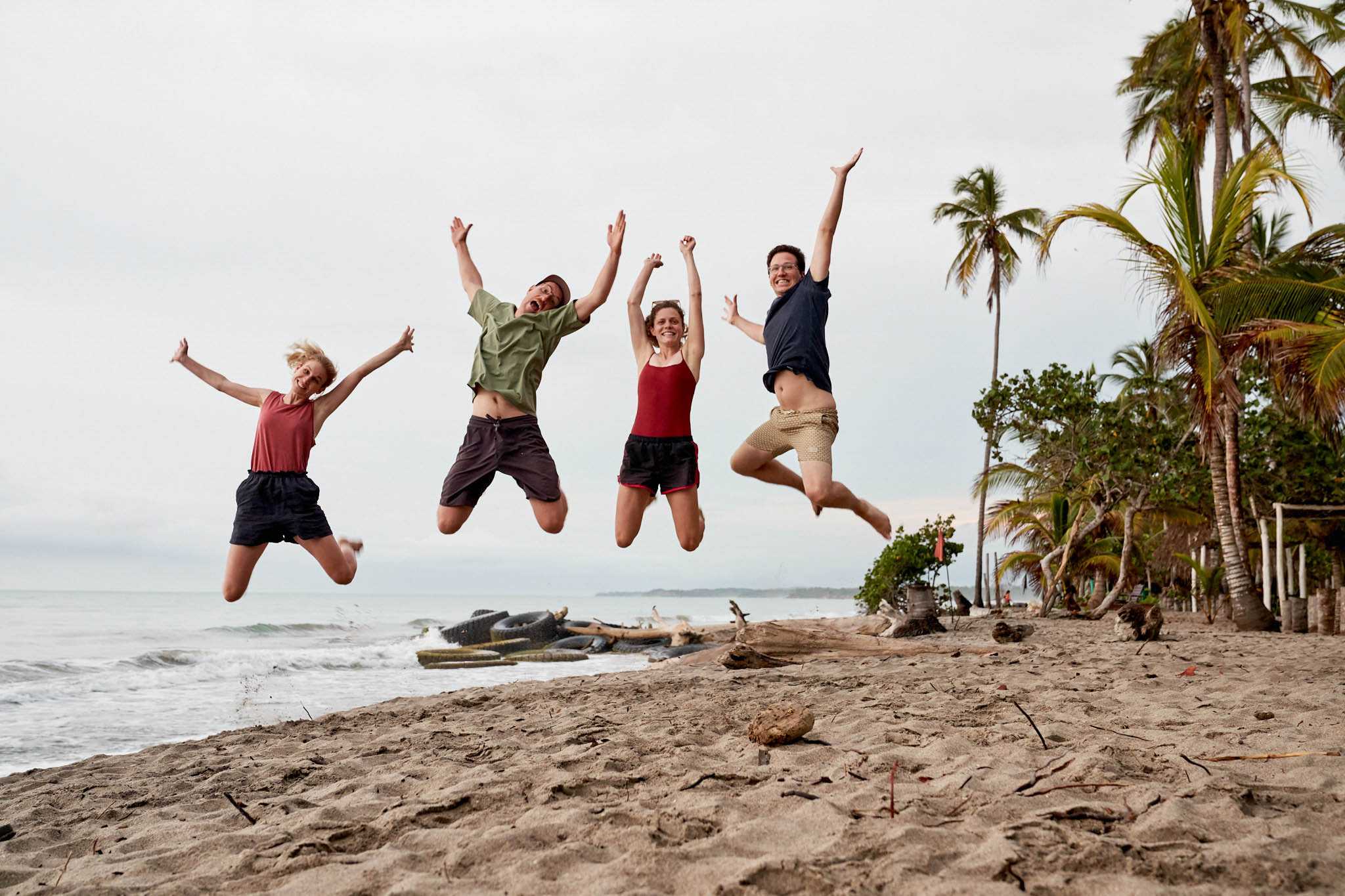
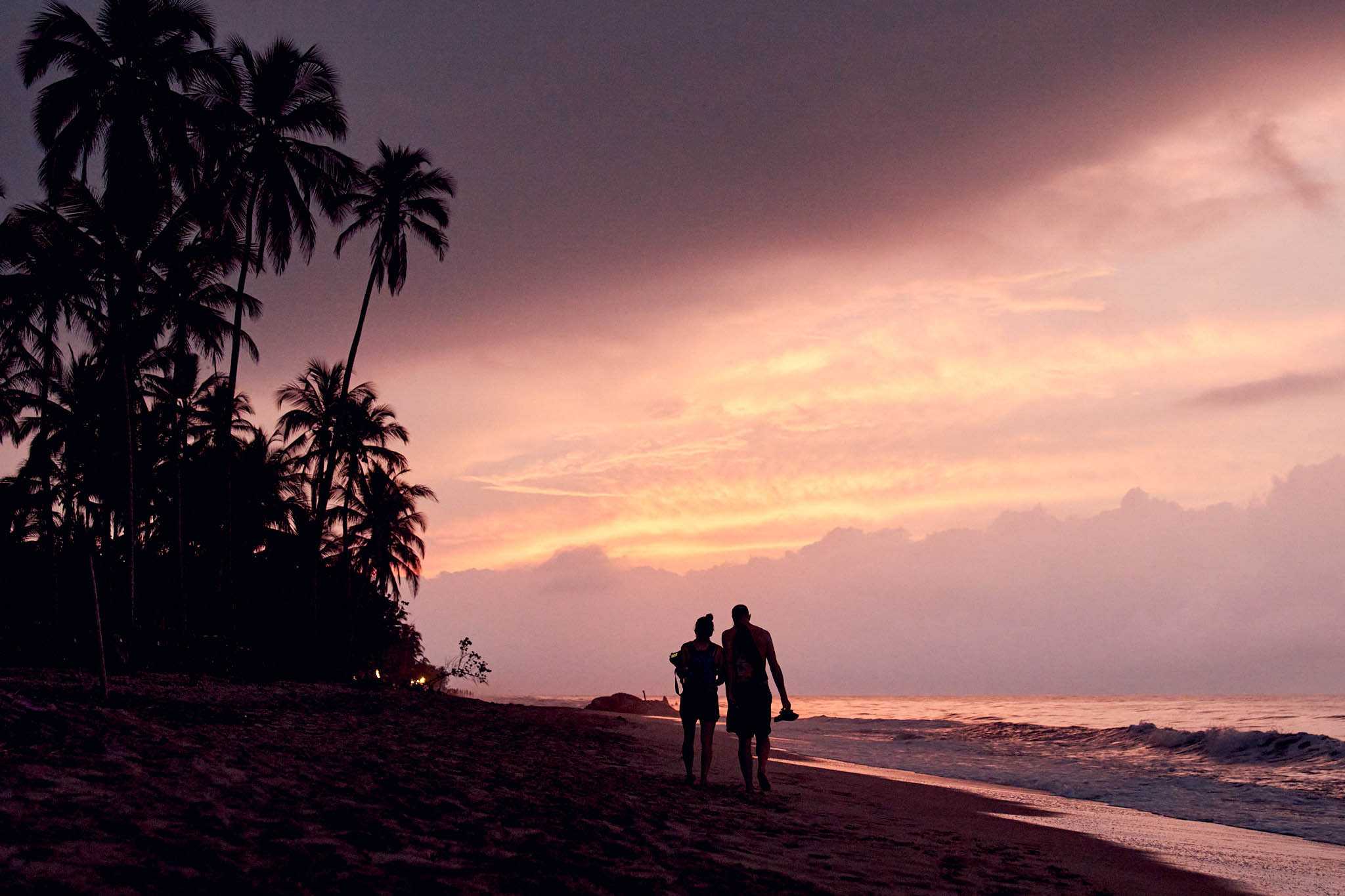
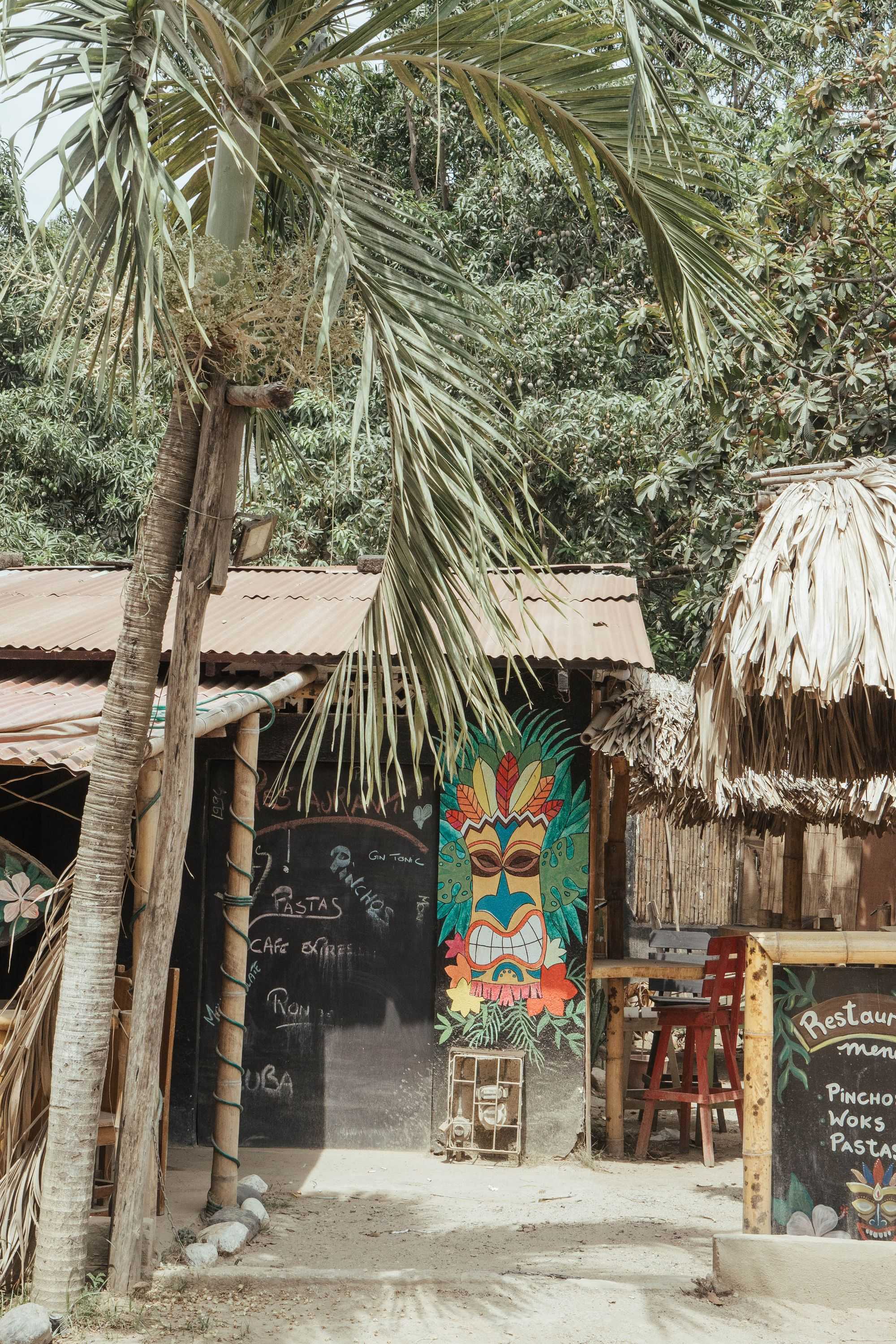
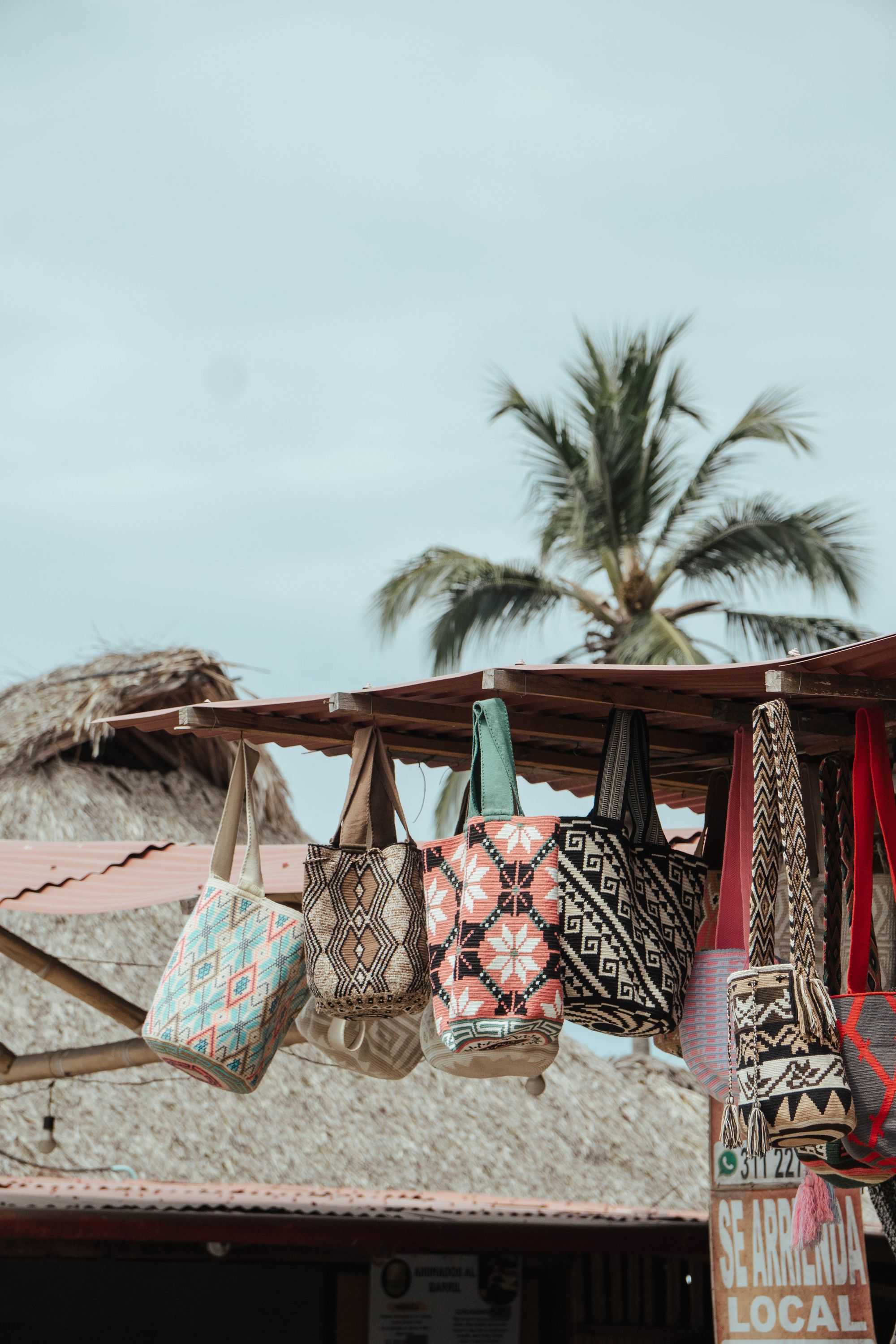
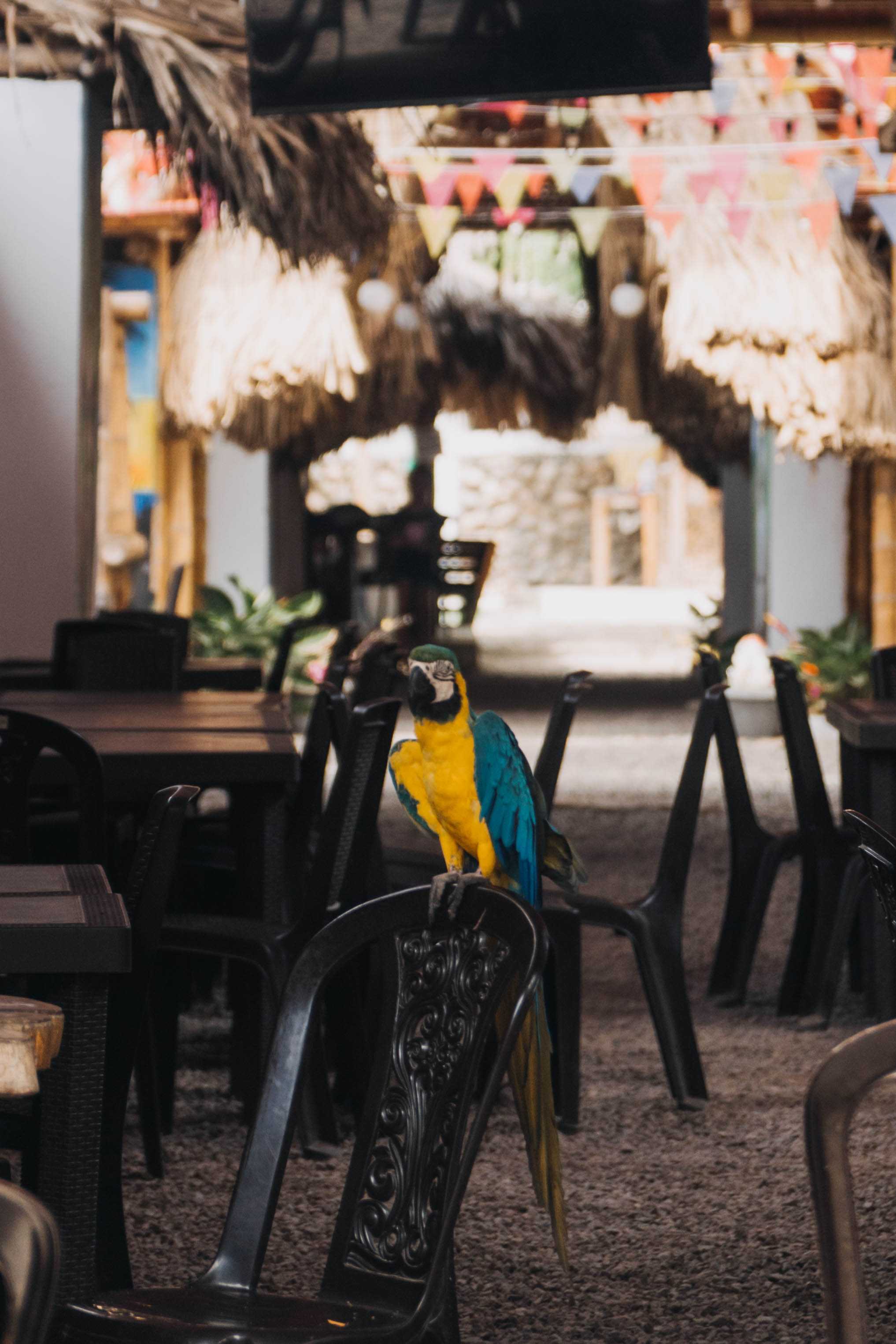
But as we all know, all holidays end one day and we take a leap inland. We are no longer used to distances just passing by without us having to manage them ourselves. Into the bus and off we go. Not that this is necessarily a pleasure. This night bus ride remains in the memory, even if not in a good one. The driving style, rather lacking in style, hardly lets you turn a blind eye. As soon as you nod off, the driver brakes massively for a hole, there is only pity left for the shock absorbers and even for the locals, the driving style seems inappropriate, as shouts of complaint resound through the corridor every now and then, unfortunately they are never heard. But well, we arrive unscathed and after two more, less hair-raising rides we reach Barichara, exhausted.
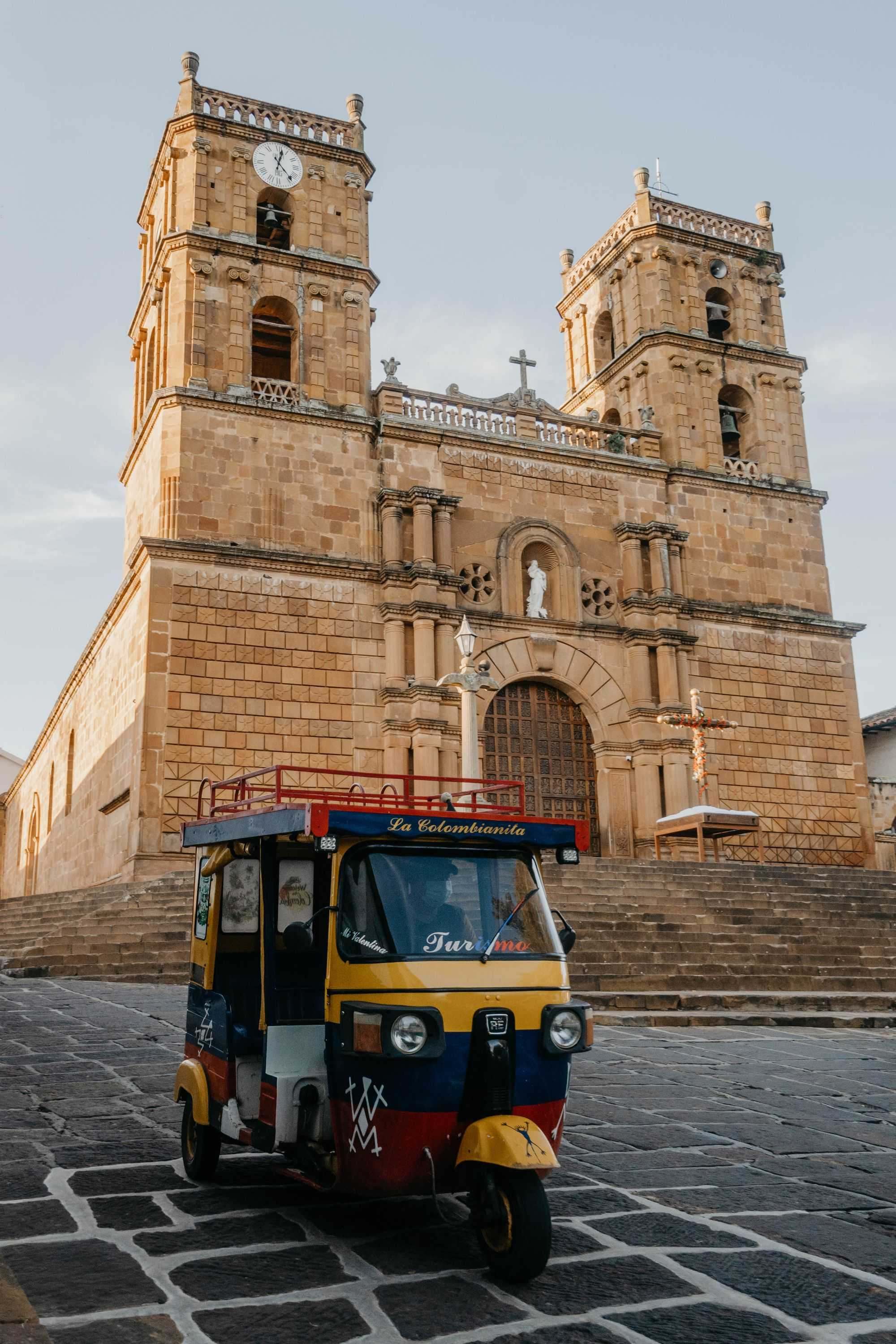
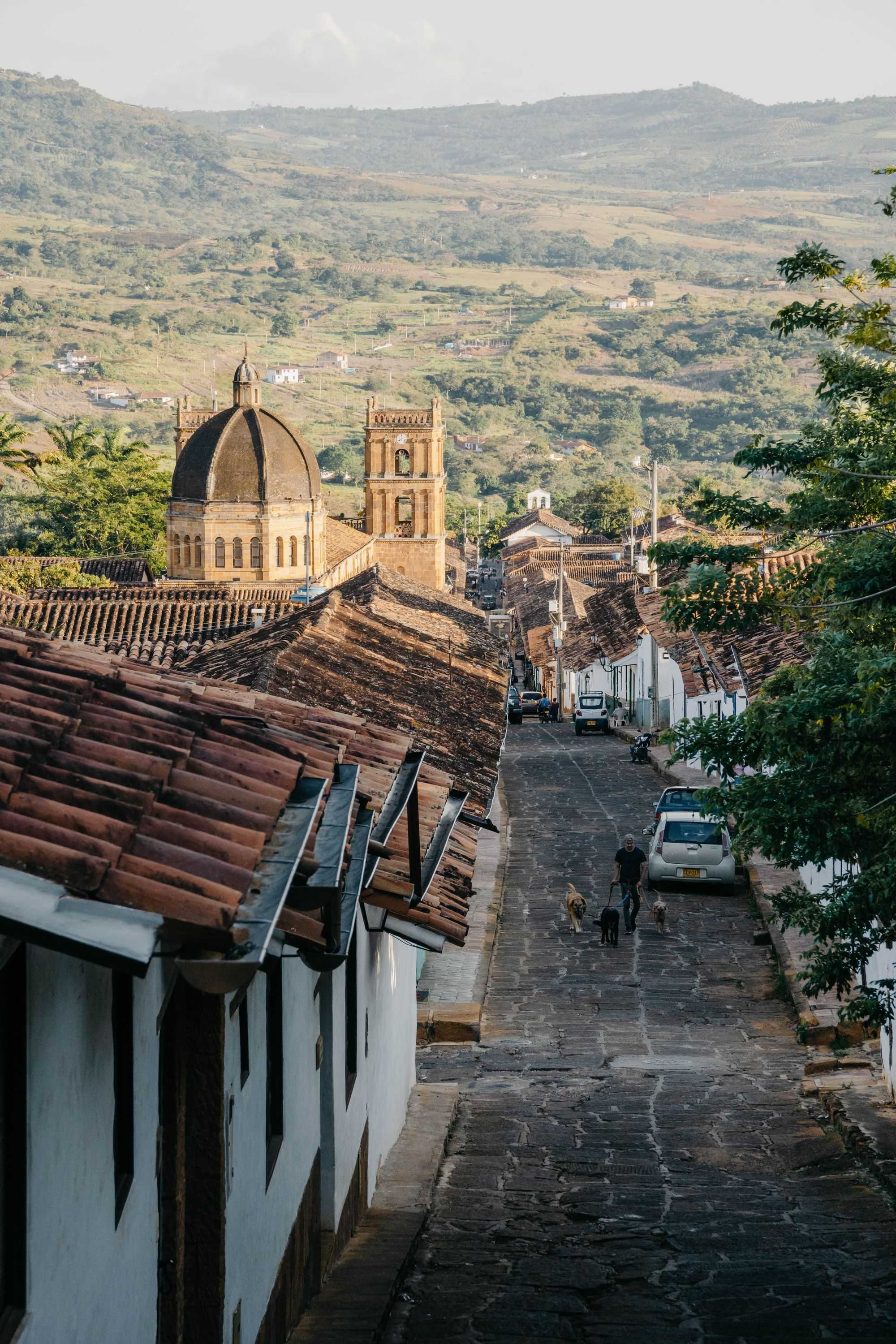
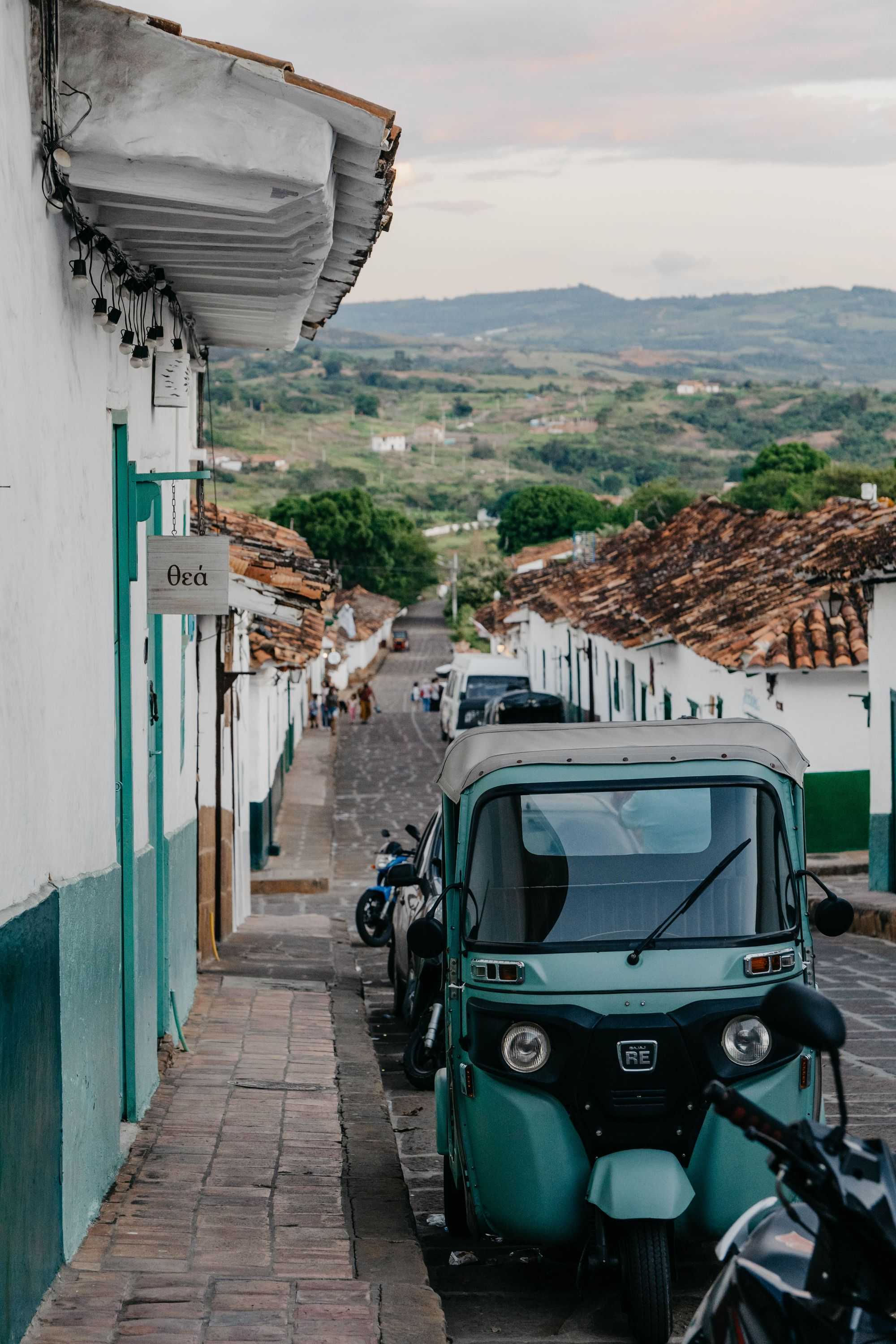
The small village above San Gil inspires us from the first minute. The climate is more pleasant and the alleys invite us to stroll. The whole village centre is well preserved in colonial style and quite photogenic. The next day, we give our legs a little run. From the village, an old path leads to Guane, another small village nearby. Thus ends our excursion in the countryside and the next city calls, no less than the capital Bogotá. Its reputation among travellers is ambivalent, so we want to form our own opinion. To start with, the metropolis doesn't knock our socks off. The view from the local mountain is pretty, but the 2-hour queue for the cable car is somehow only moderately worth it. The old town also has some nice corners to offer, but all in all not outstanding. The poverty is clearly visible, in many corners people lie on the floor wrapped in their blankets to sleep, a sad picture. But we do have a concrete goal in the capital, thanks to Netflix. The streaming service has published a series about street food in South America and the Perseverancia market in the capital is part of it. The market hall houses numerous food stalls that sell typical dishes from all over the country in excellent quality. Accordingly, the hall is packed at lunchtime, but after a while we also find a place and enjoy a "Mote de Queso".
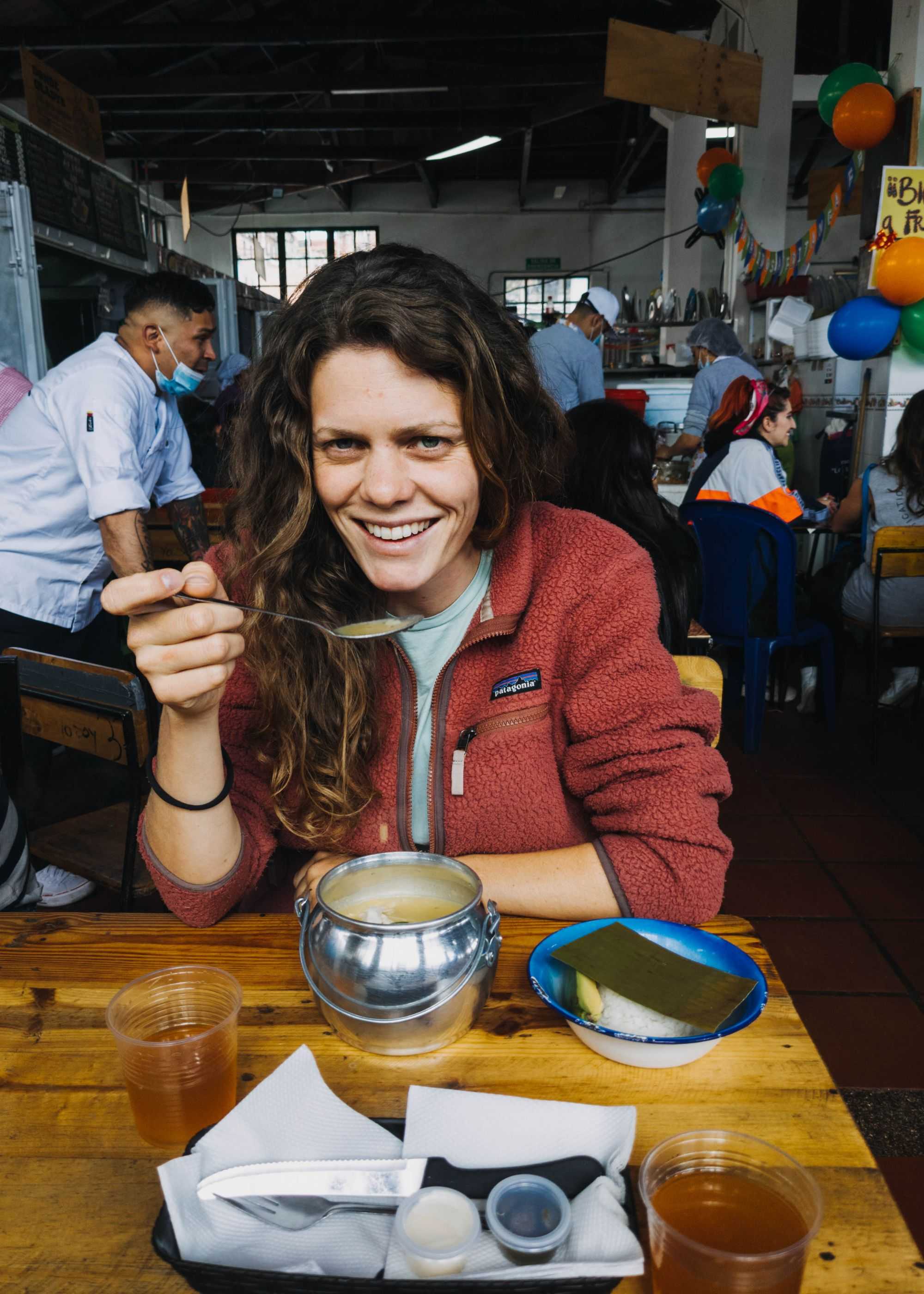
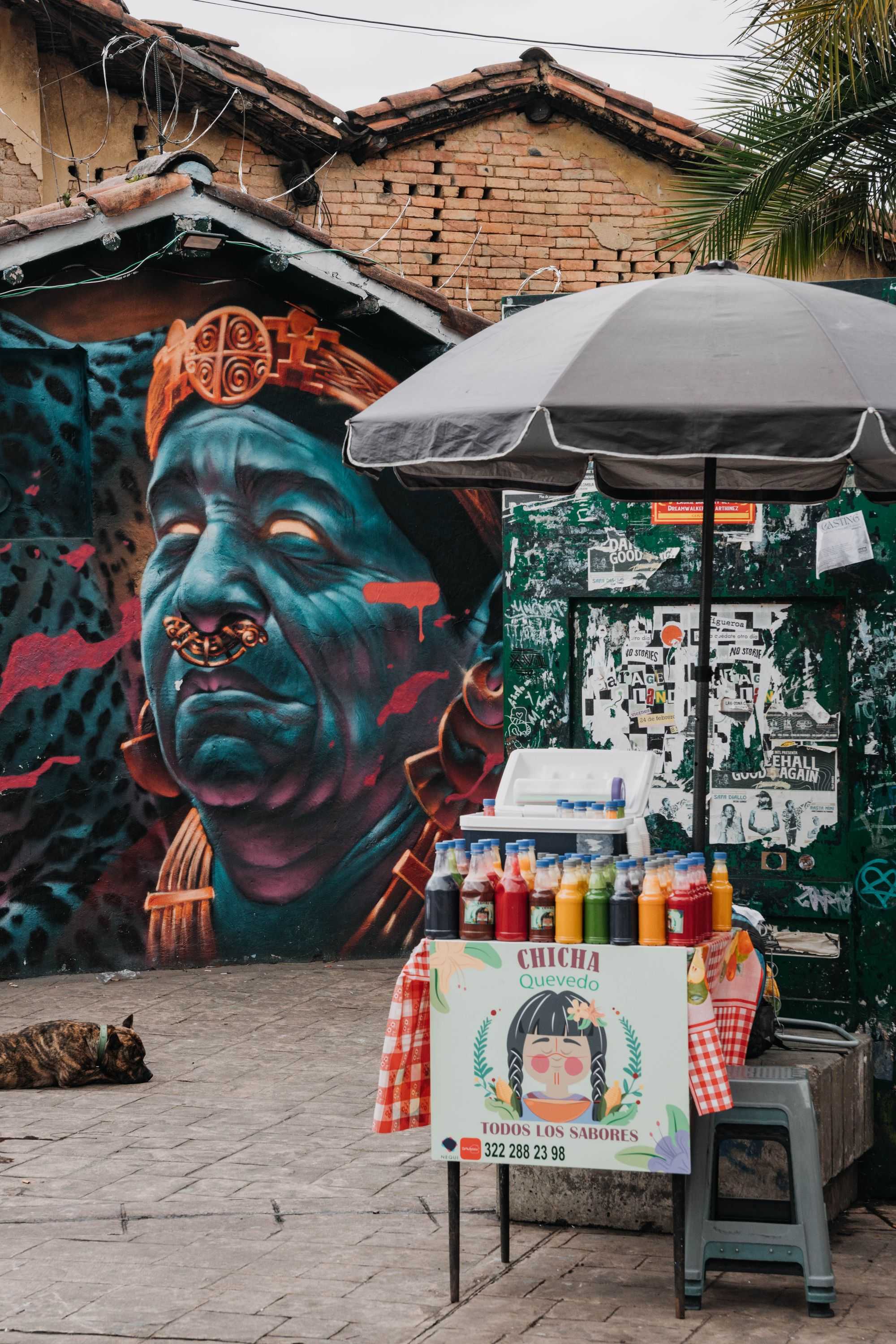
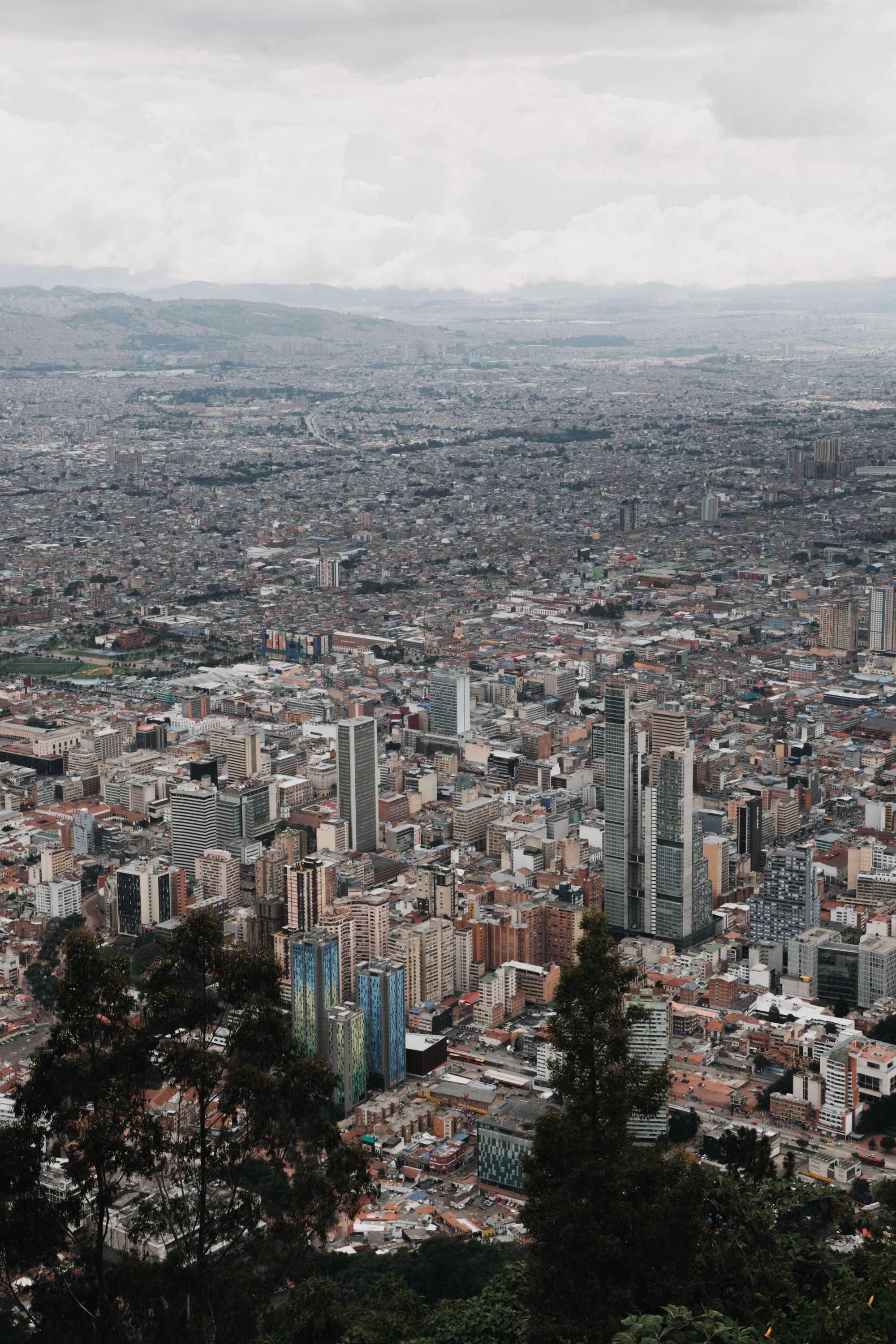
After the visit to the capital and another bus ride through mountainous terrain (Colombia is criss-crossed by three chains of hills, so we drive up and down accordingly), we reach Salento in the Zona Cafetera. This corner is considered THE coffee-growing region of the country, and Colombia is also known for its brown delicacy. Touristy, but pretty as a picture, that's how Salento can be described. The colourful little houses and the many good coffees drive away sorrow and worries or something. We continue our education and learn about the history of coffee. The best beans are exported, by the way. The everyday coffee in Colombia is called "Tinto", has a slightly sweeter taste than the coffee we know and is produced from leftover or damaged coffee beans. An exciting excursion into a world still unknown to us followed by the next day, where we marvel at the highest palm species in the world, the "Quinido wax palm", on a relaxed hike. The tallest specimens reach up to 60m into the sky and the palms grow at altitudes of 2000-3000 metres in mountain rainforests.
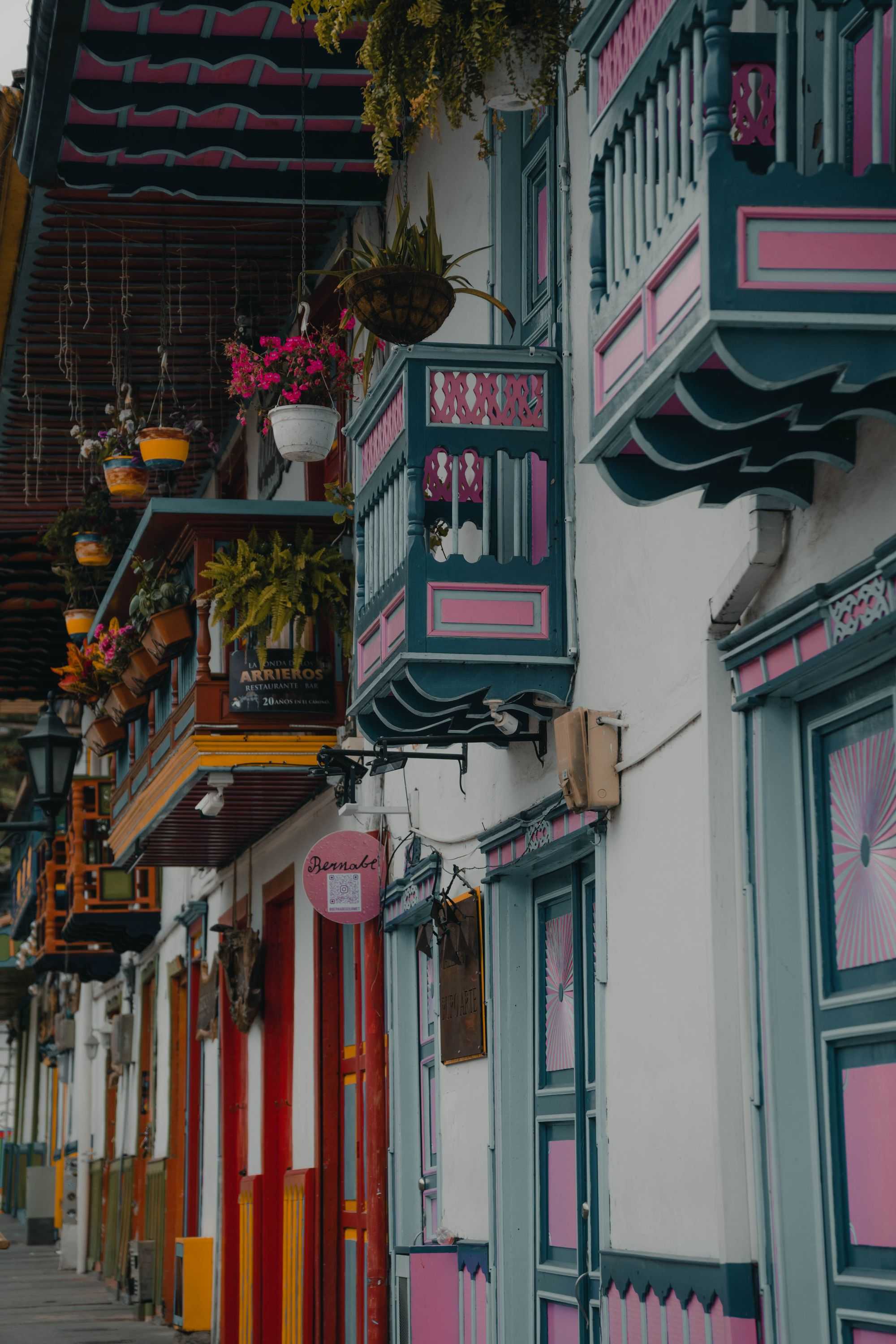
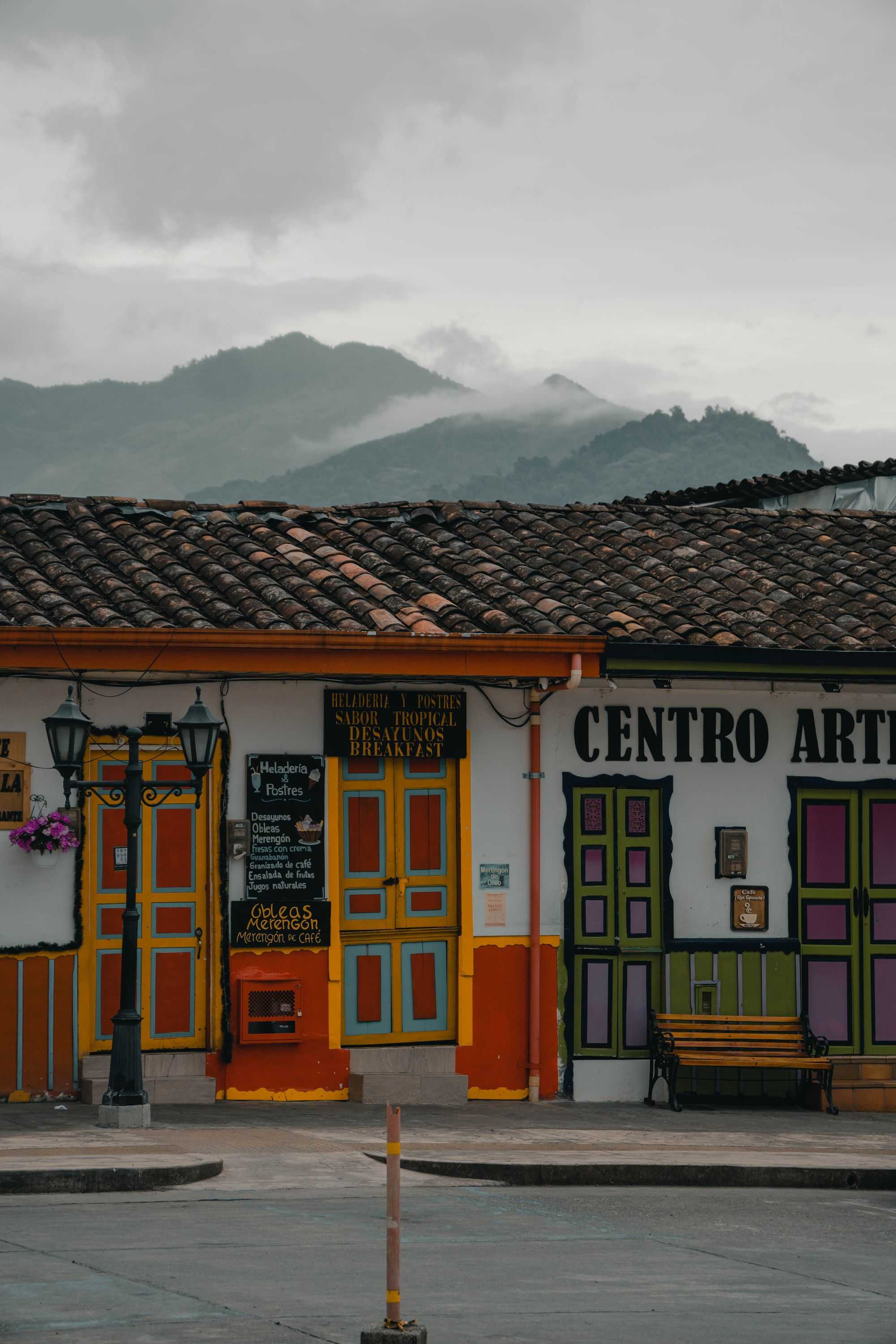
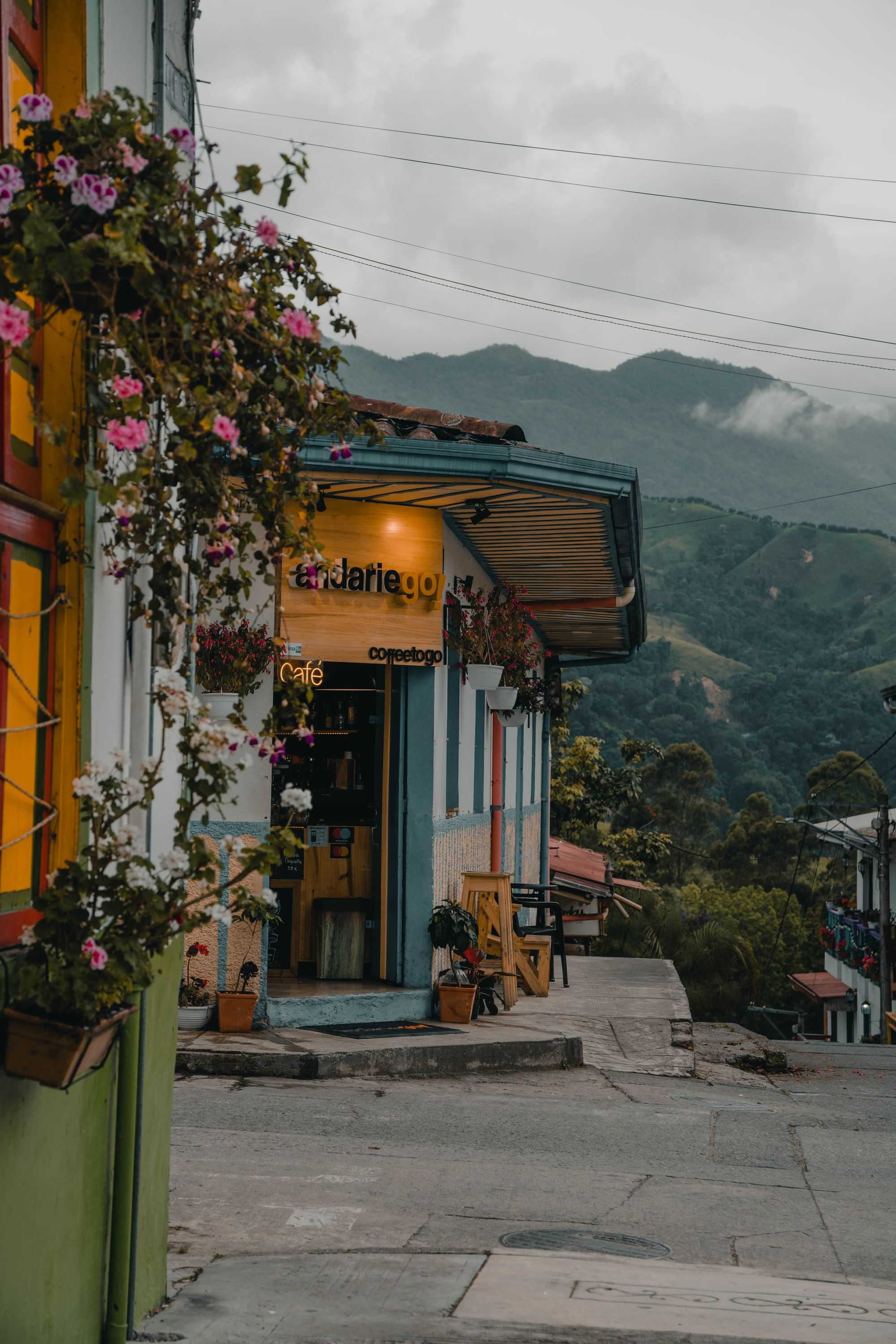
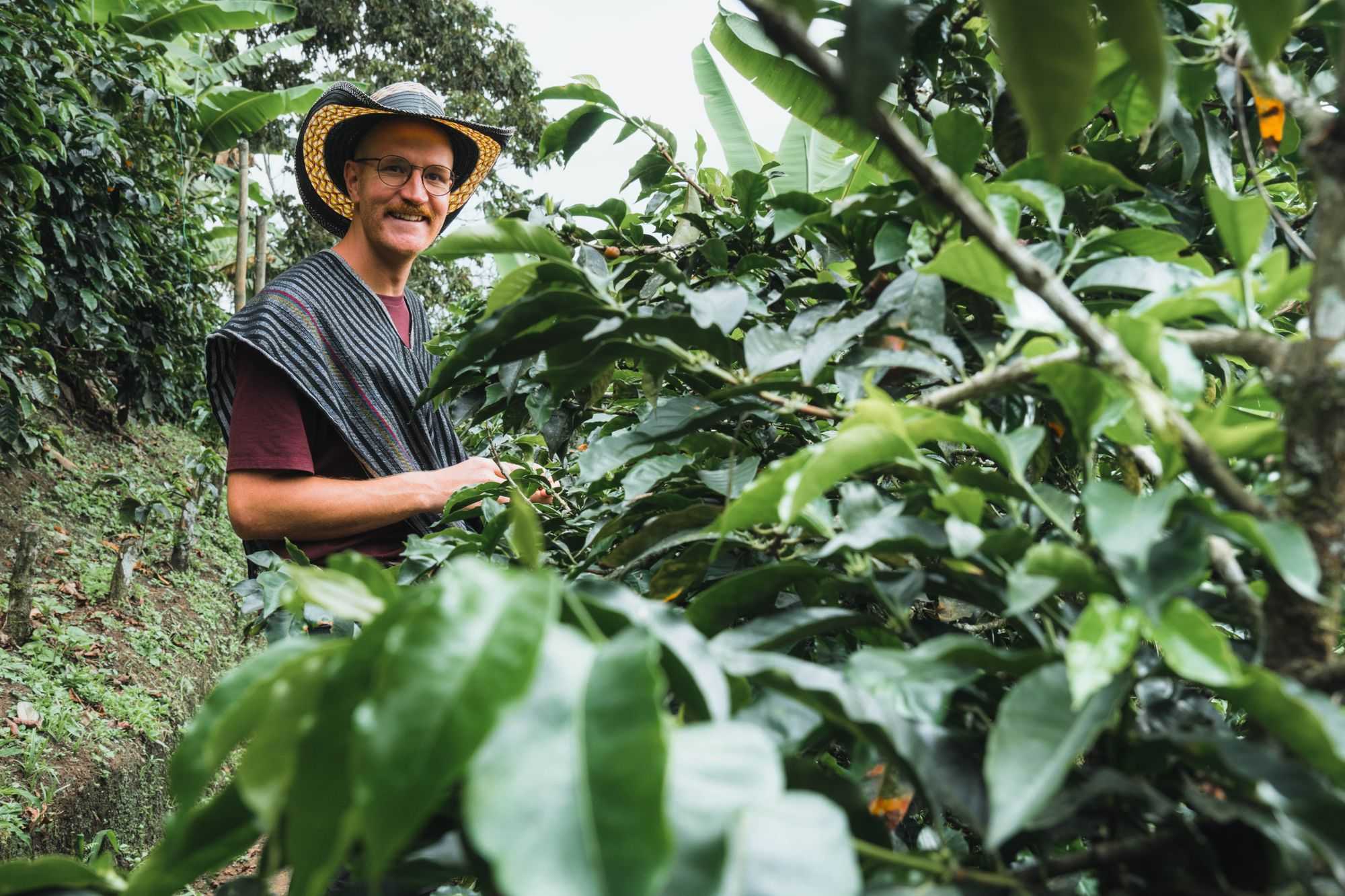
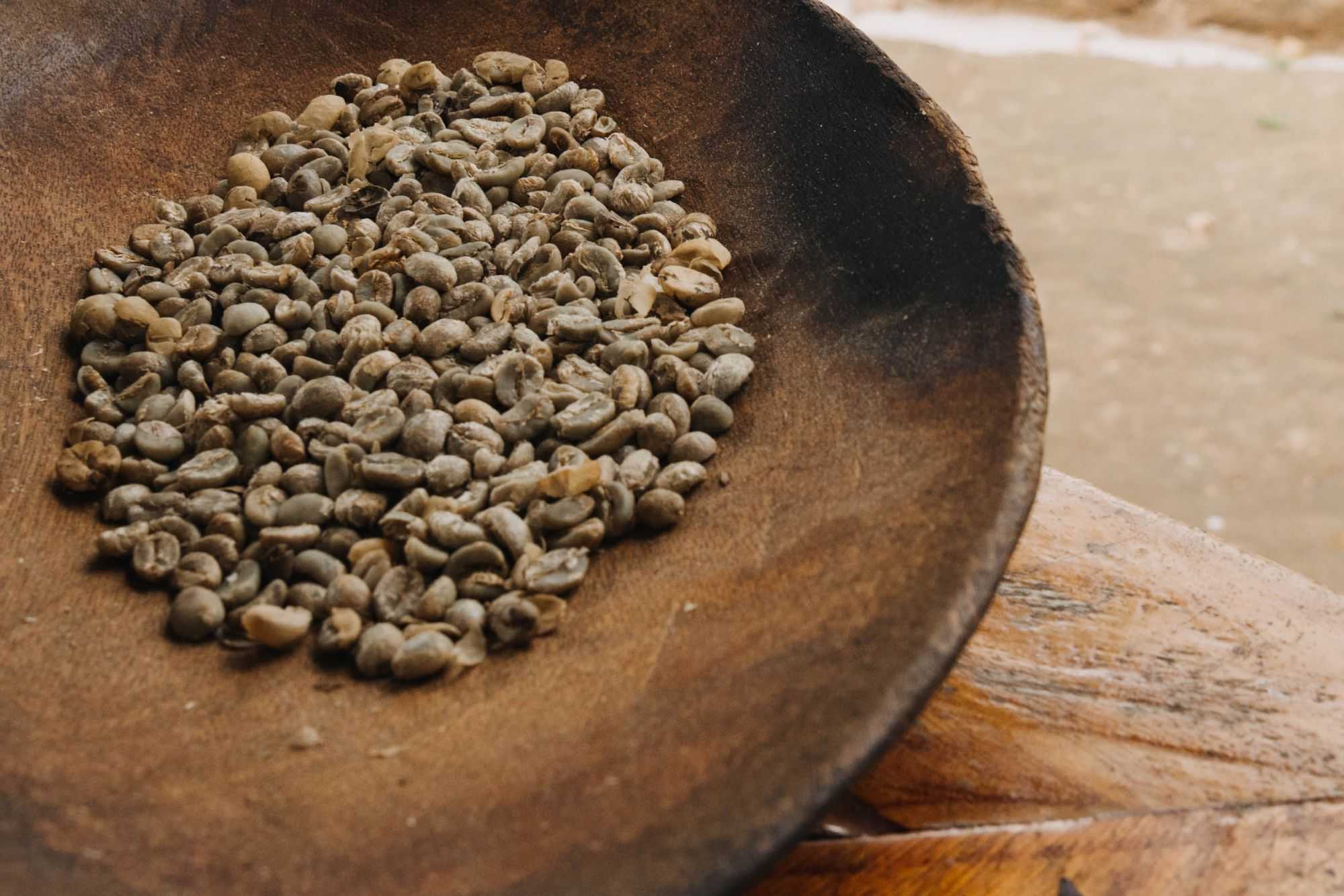
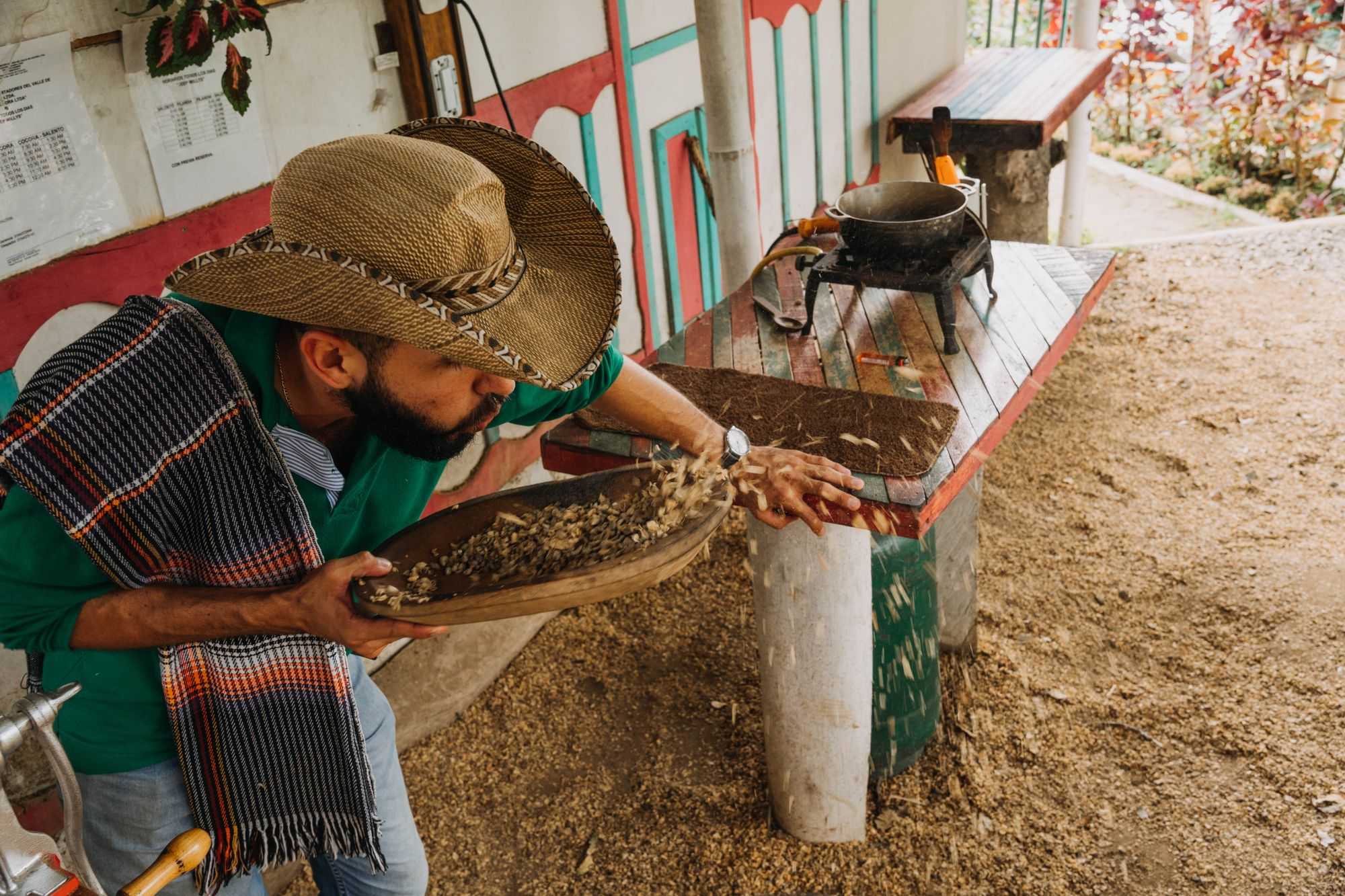
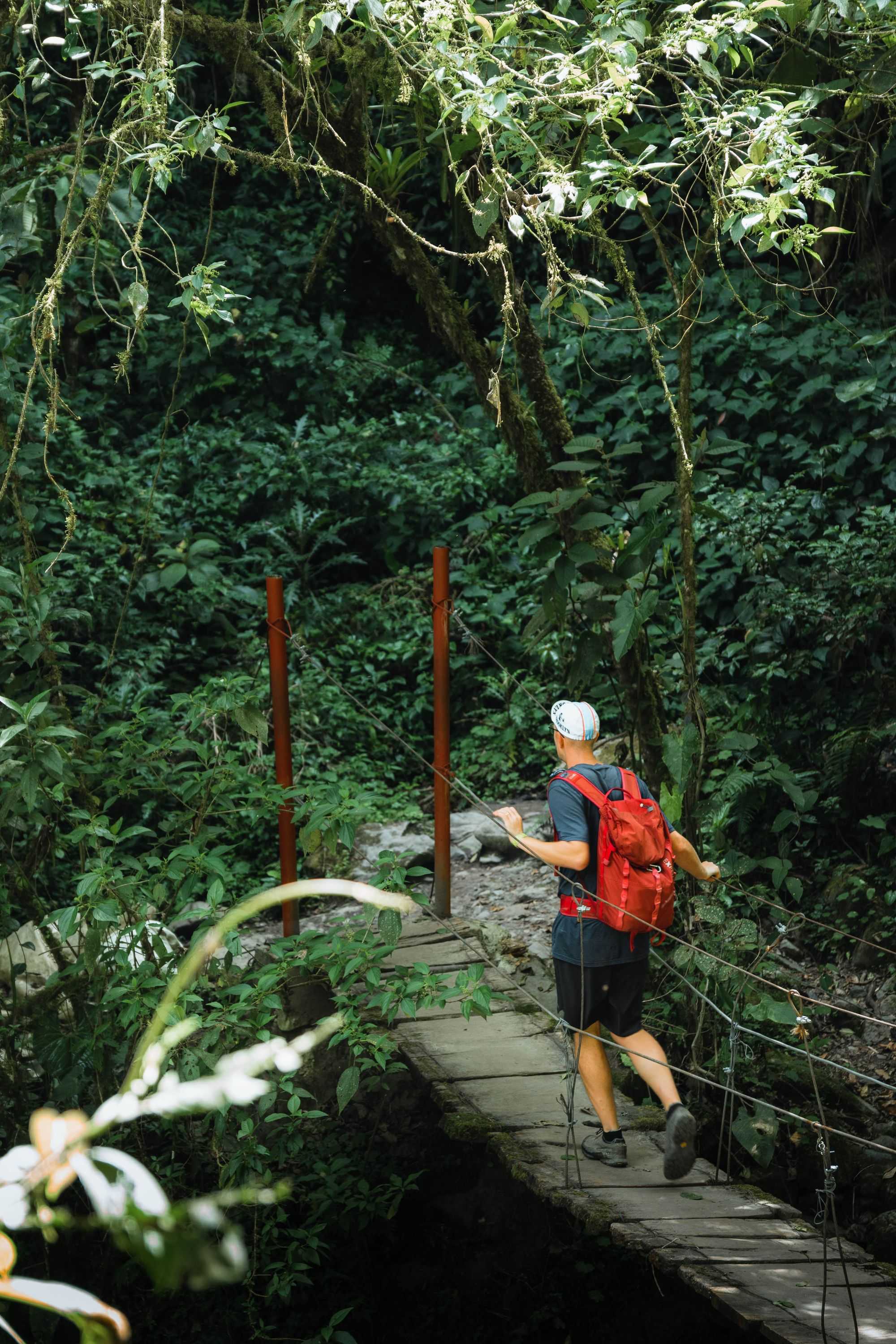
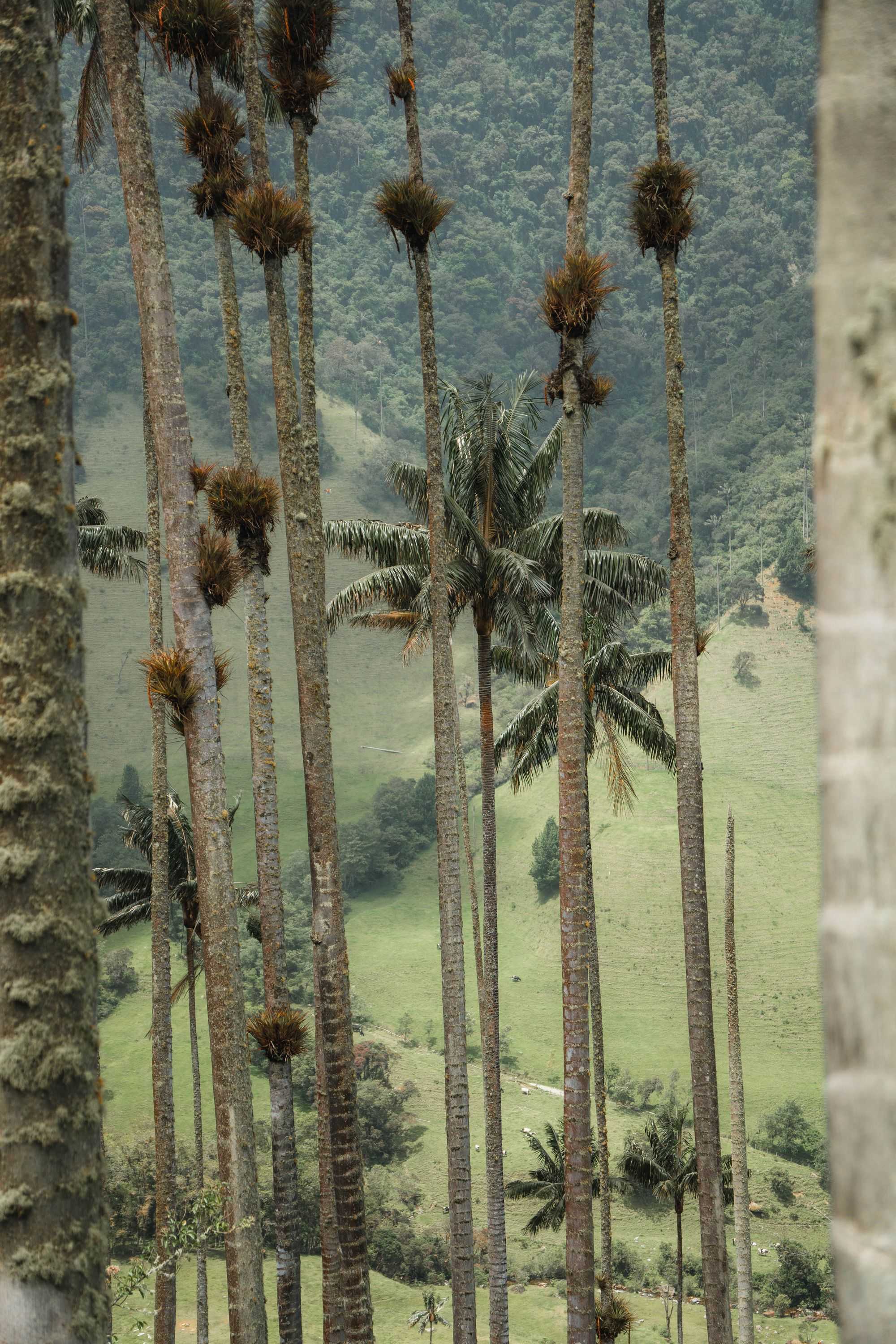
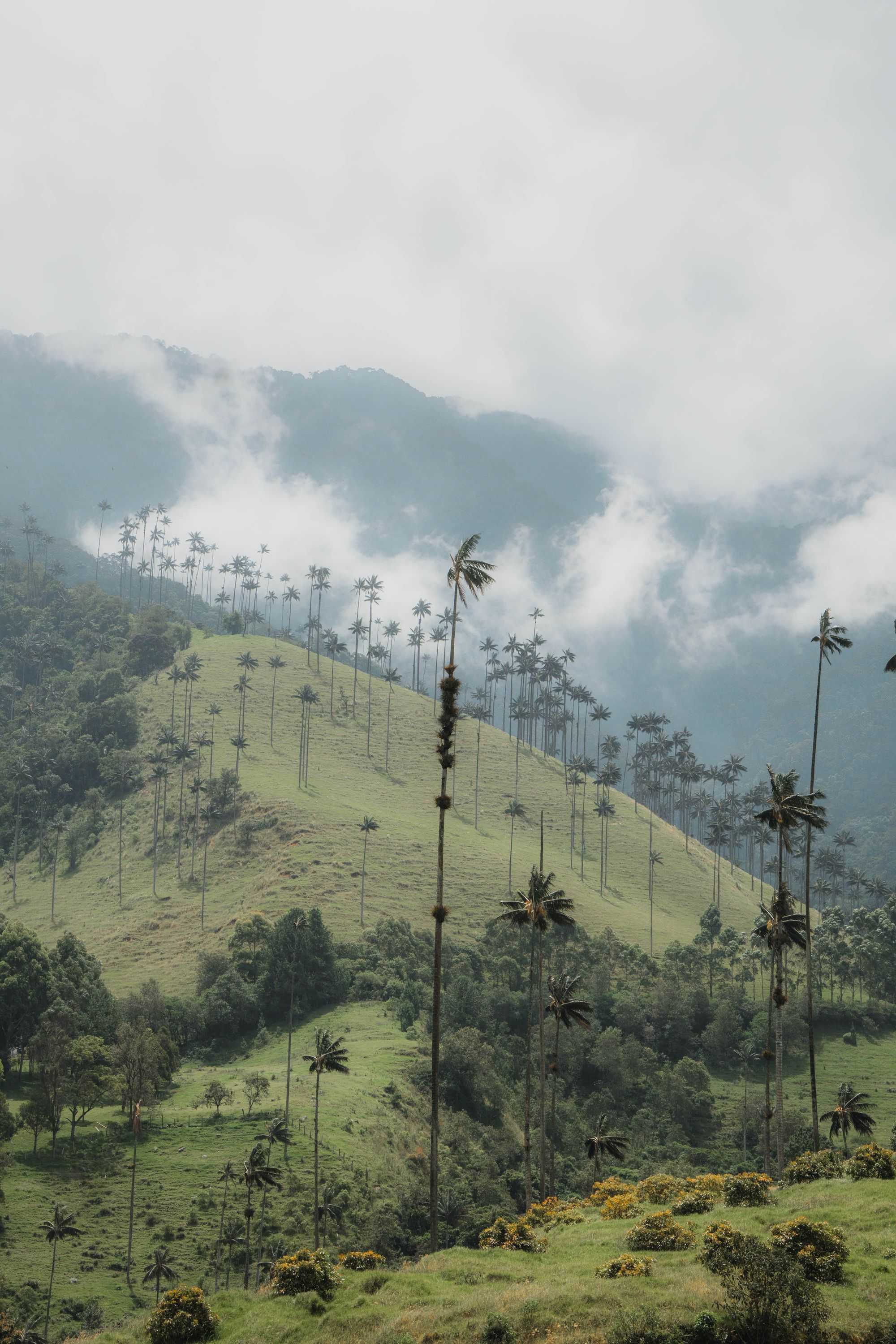
The days fly by and one bus ride later we reach Medellín. For the time being, only for a short night, we travel straight on to Guatapé. We only visit the village because it is really directly on our route to San Rafael, but it is well known among tourists. Apart from the pretty village centre with its colourful houses decorated with relief art, it is "El Peñol" that attracts most attention. The granite hill rises into the sky and can be climbed via about 700 steps (the information about the number of steps varies depending on the source, we did not count), which are worth the effort, because the view is worth seeing.
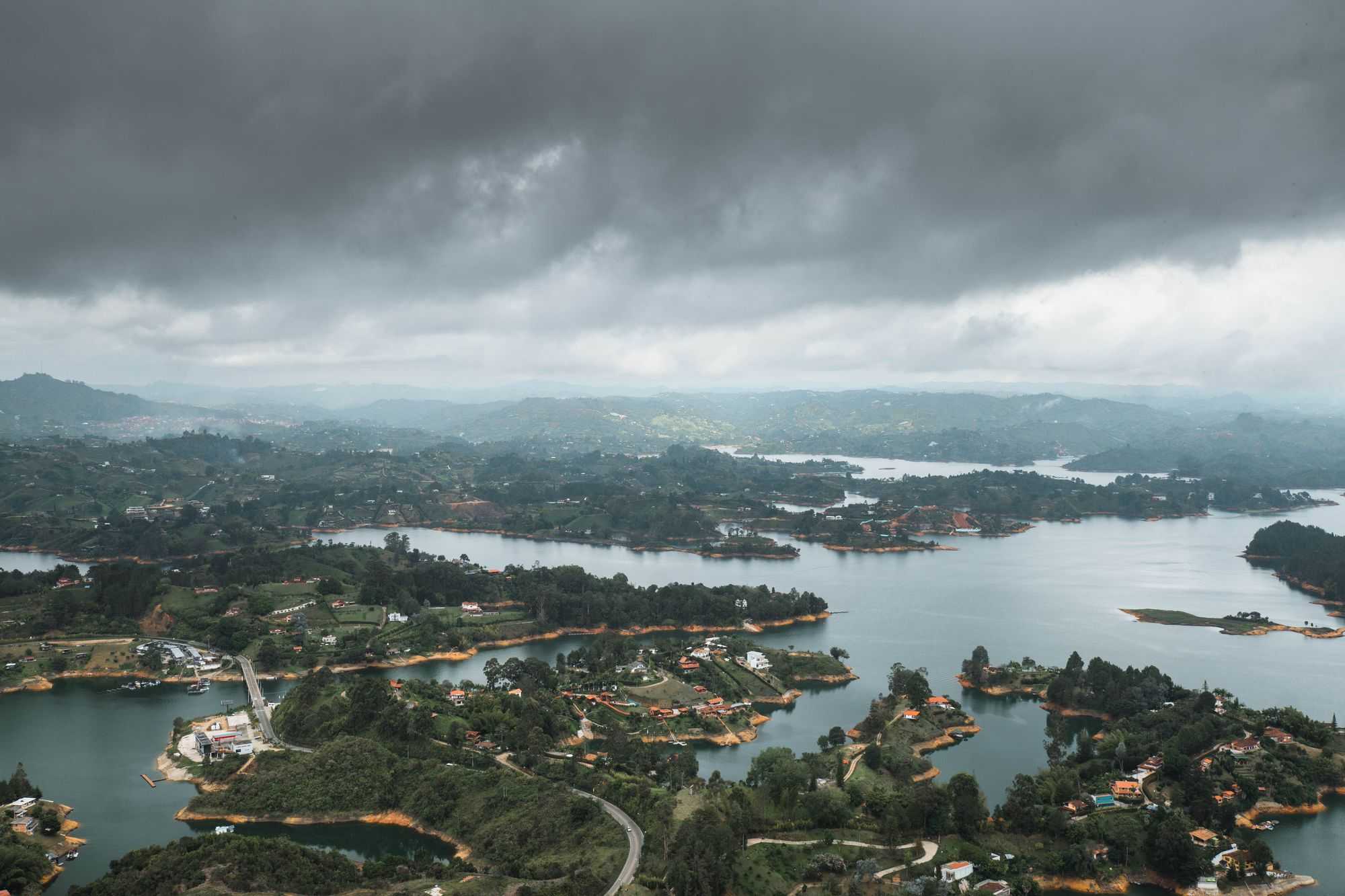
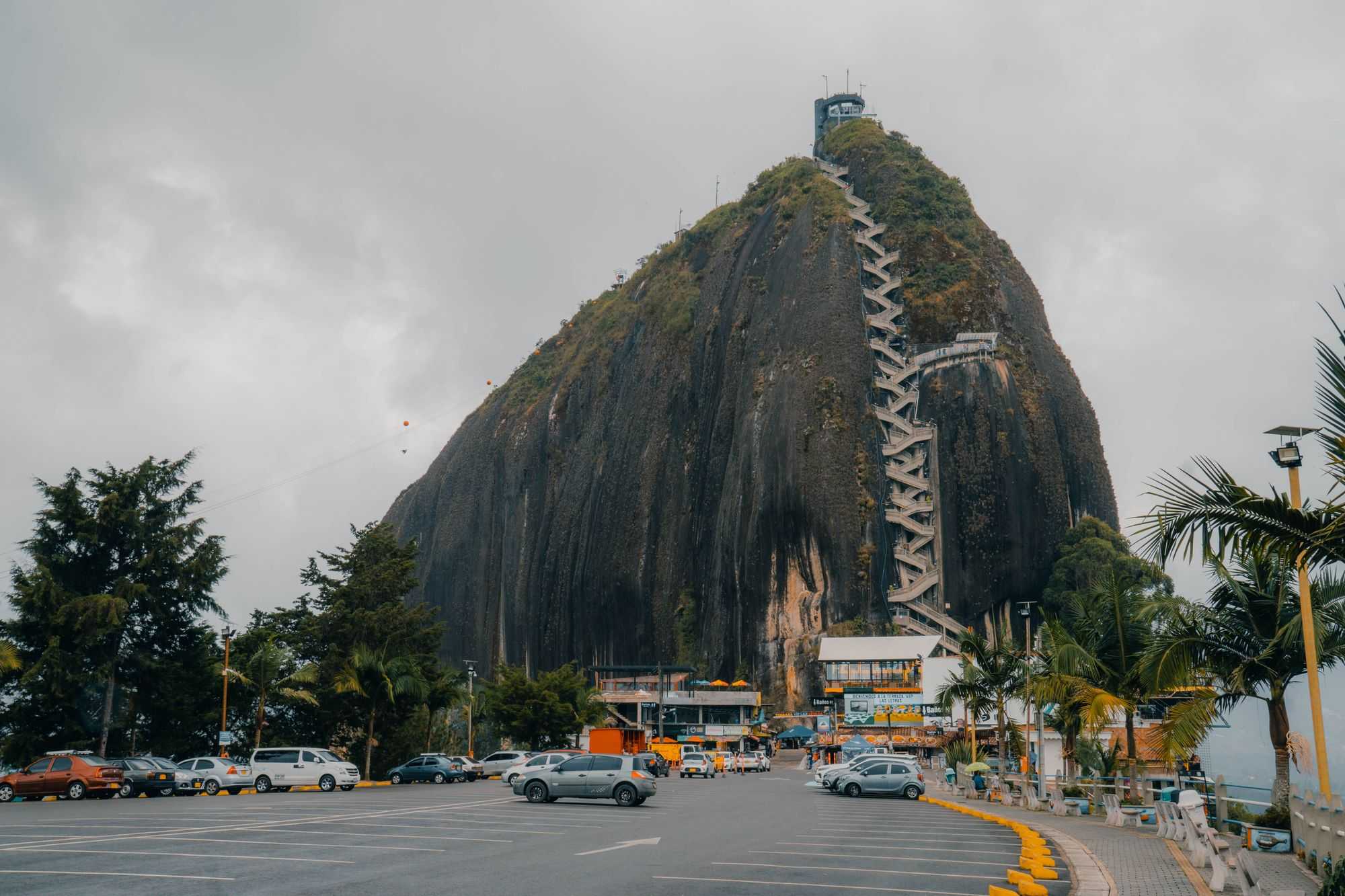
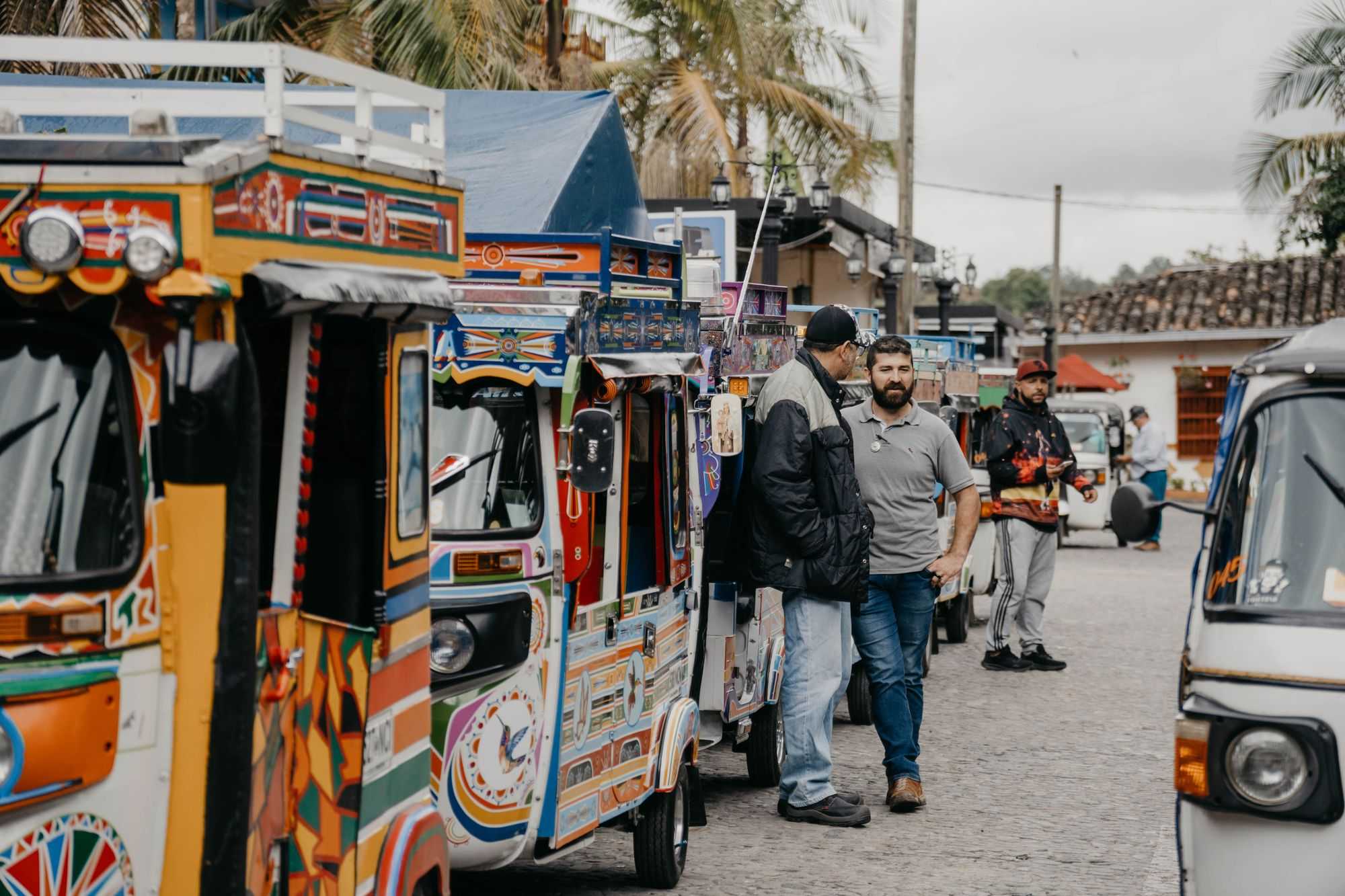
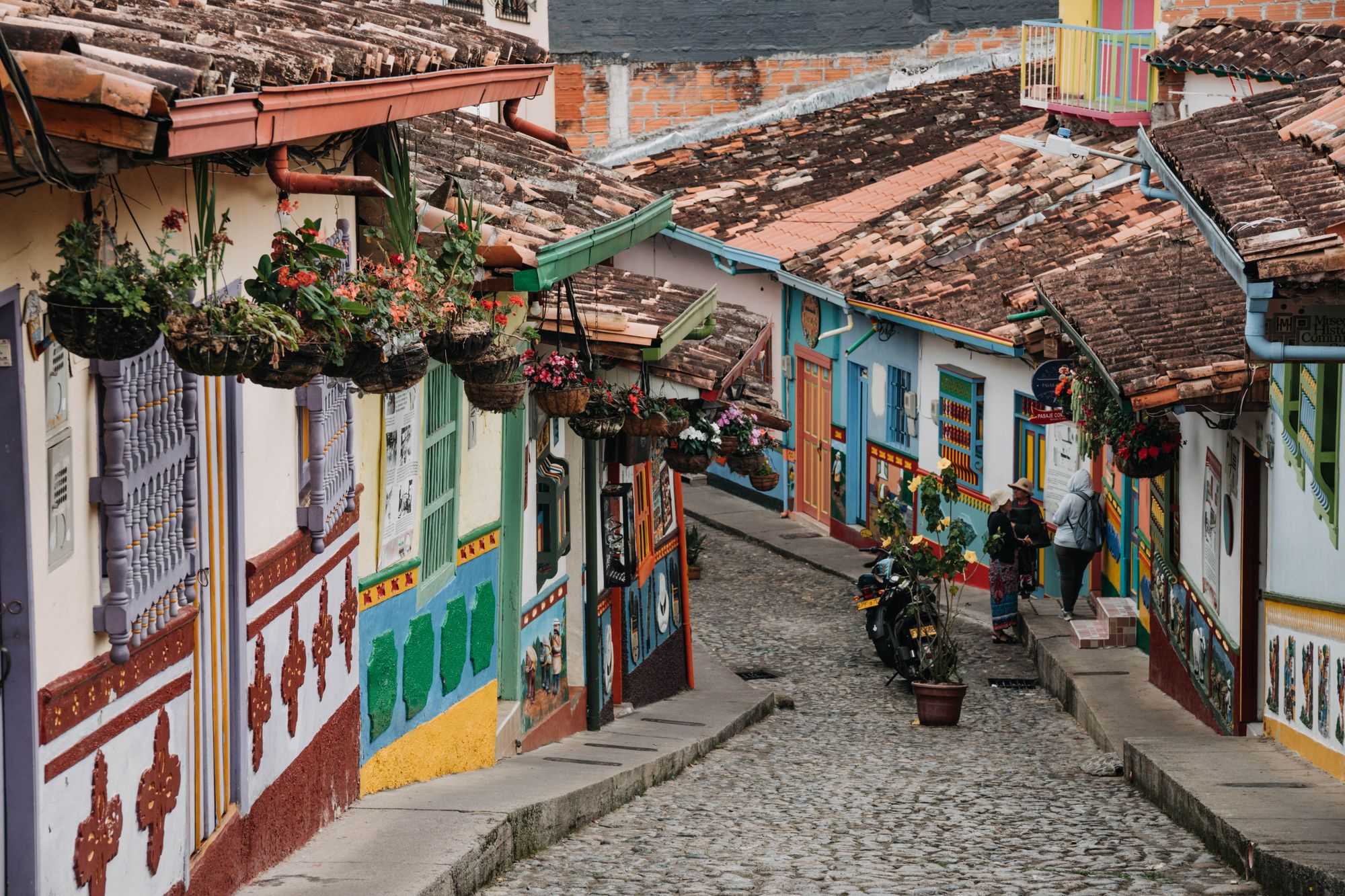
After this stopover, we reach San Rafael, or rather our hostel, which is somewhere in the green. Anyhow, Colombia is still green. The vegetation is often very lush and many rivers and streams meander through the landscape. The big plus of this tropically lush landscape are the fruits. A real dream. Fresh fruit everywhere, some of it unknown to us. Every breakfast contains some, every accommodation has a blender so you can make your own juice, we will miss that. The hostel in San Rafael is a true oasis. Here we let our souls dangle, go swimming in the river, watch the birds and indulge in culinary delights. And our excursion the following day is also about cuisine. Finally, we Swiss learn how to make chocolate. On a small family farm we are introduced to the secrets of production, are allowed to lend a hand ourselves and learn much more than just cocoa and chocolate on the tour of the premises. You can tell that our guide grew up with nature, he knows an incredible amount about all plants and their interactions, so that biodiversity still works here. The end product doesn't taste equally good to both of us, but it was well worth the trip.
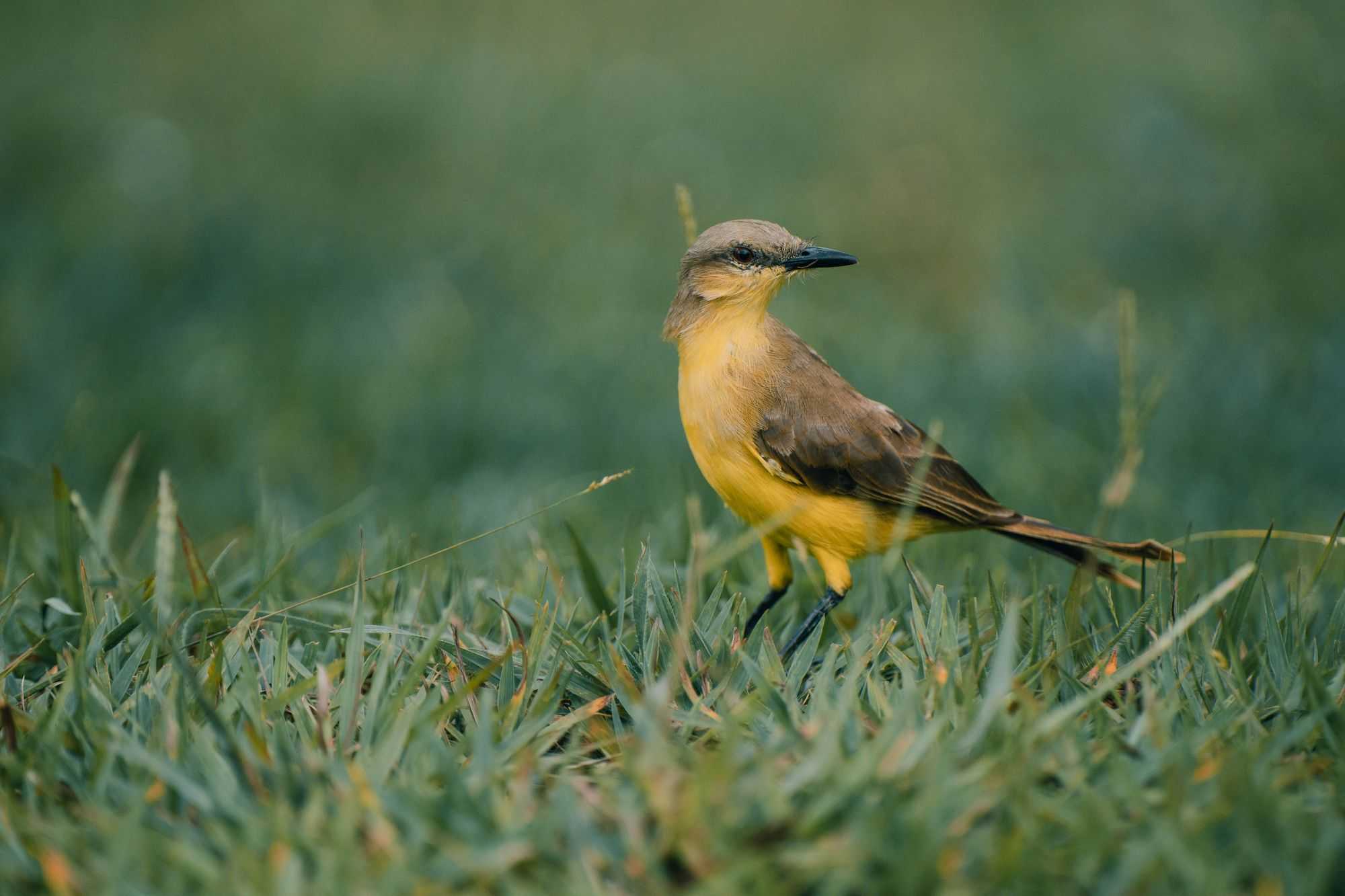
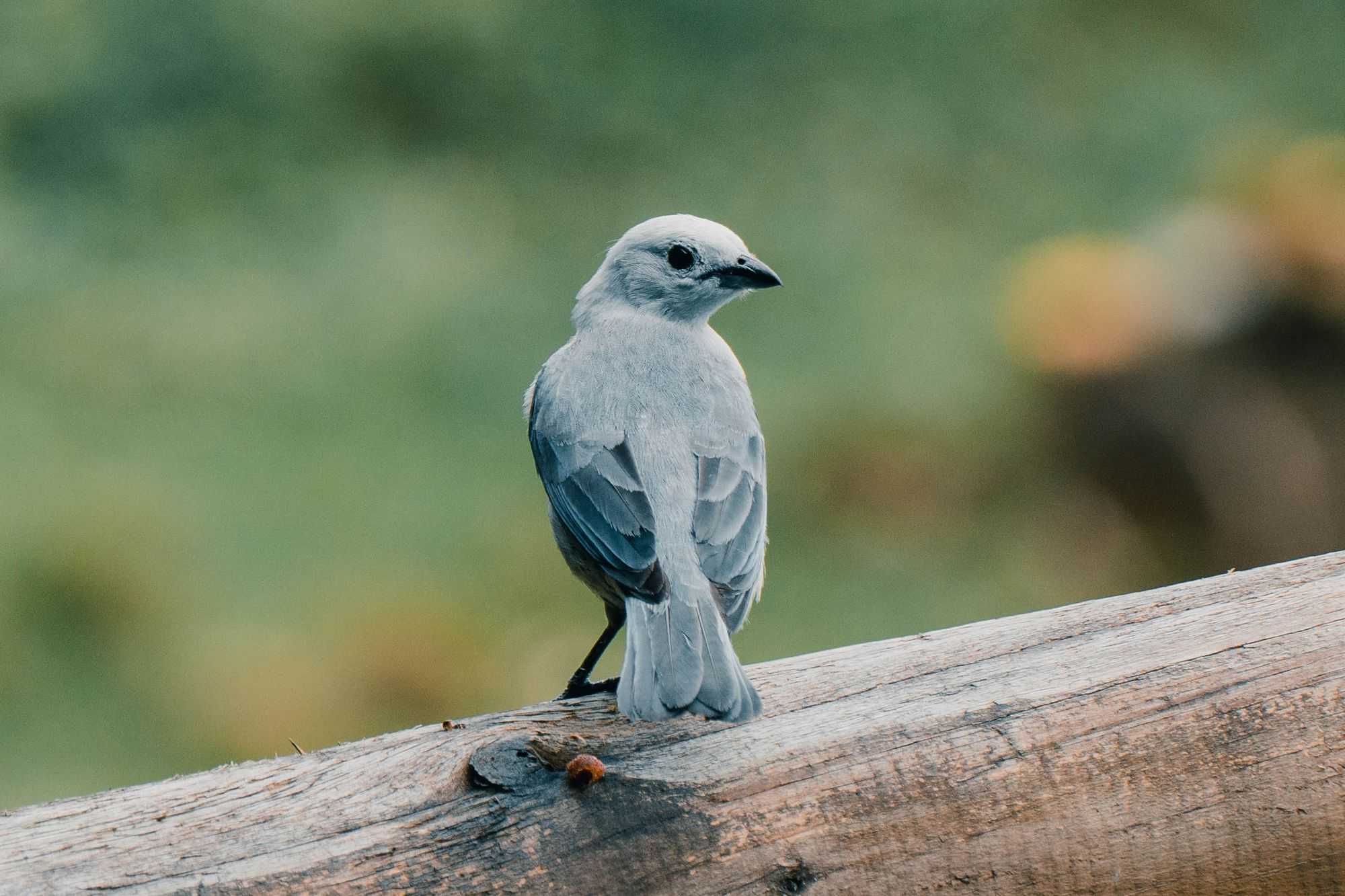
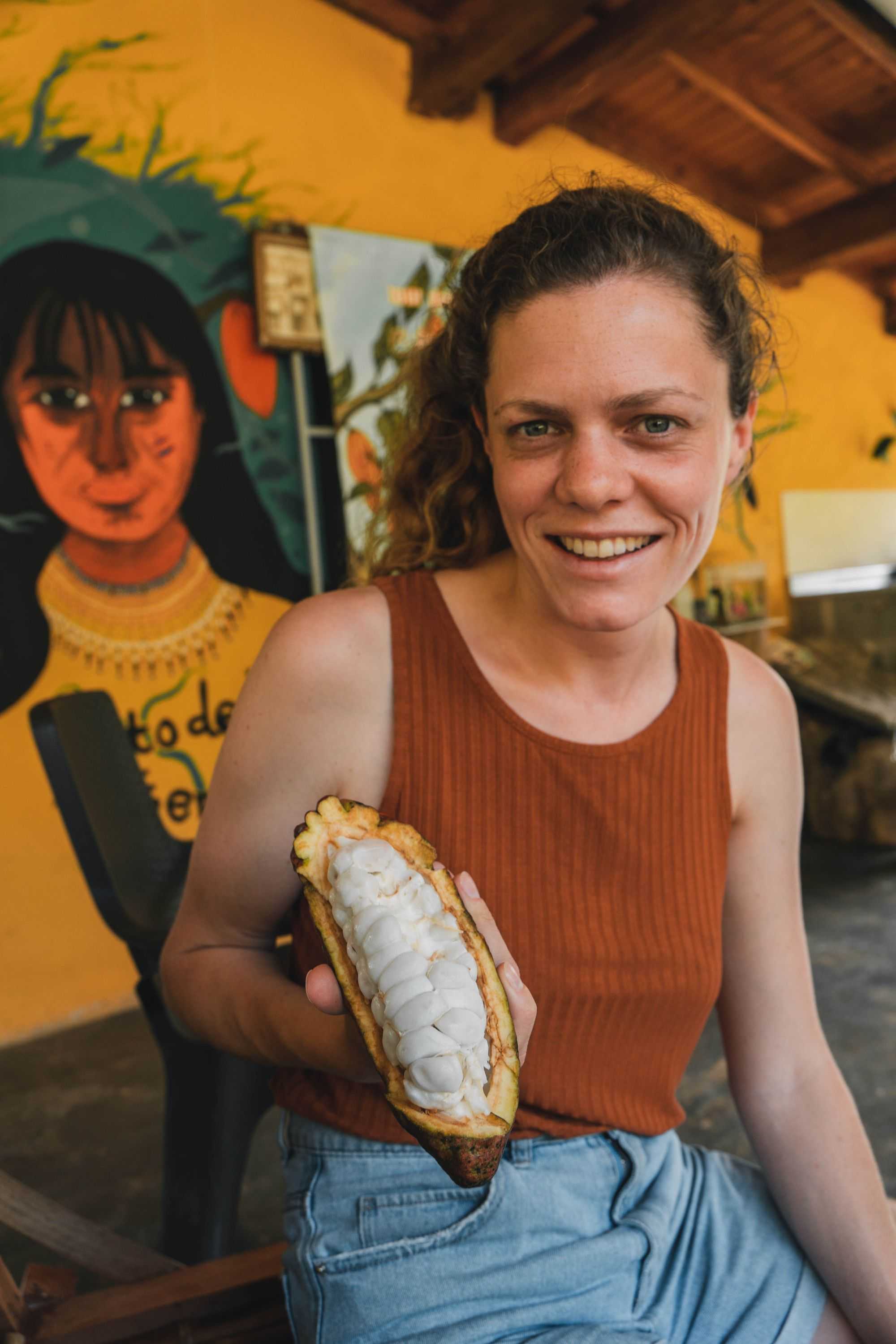
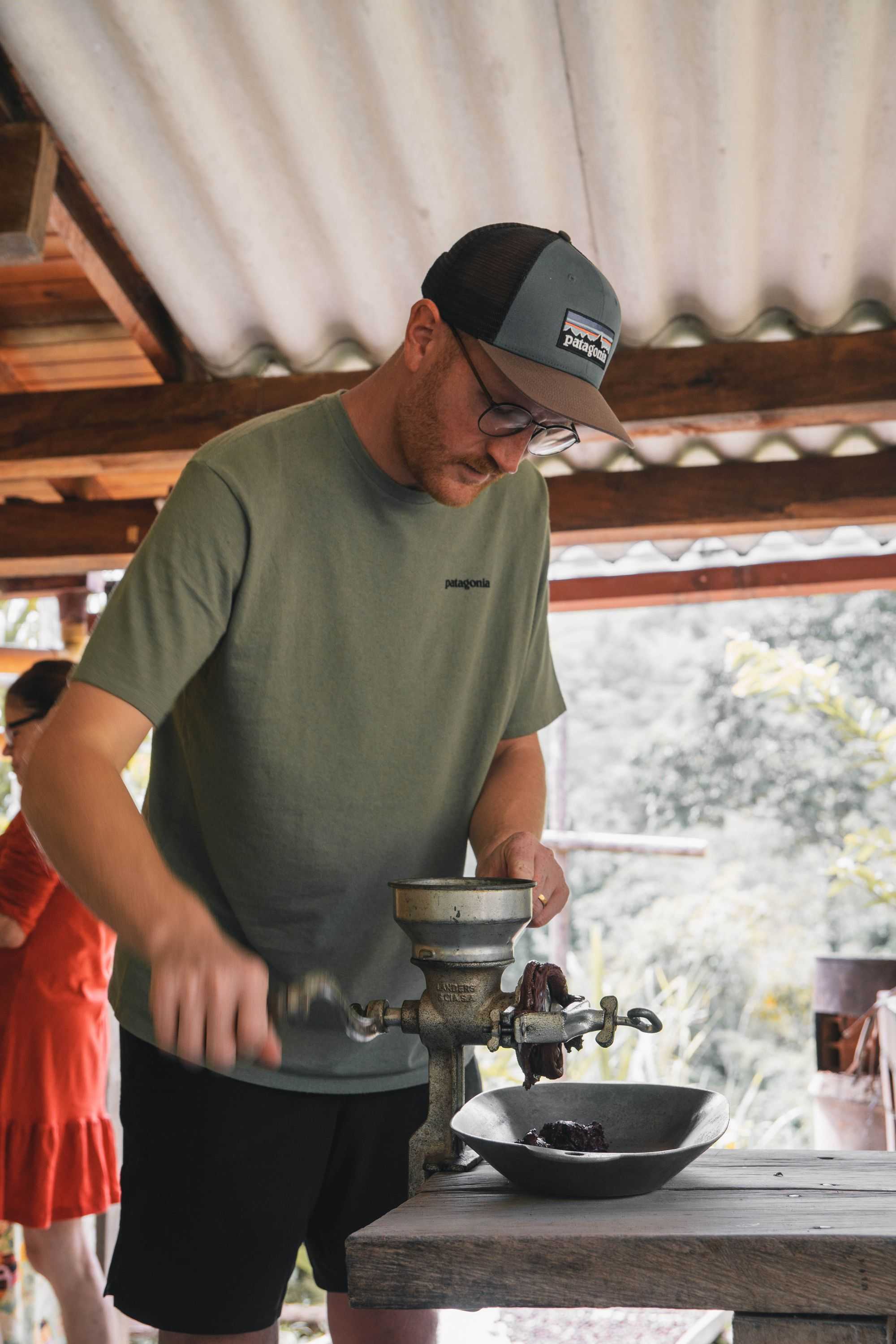
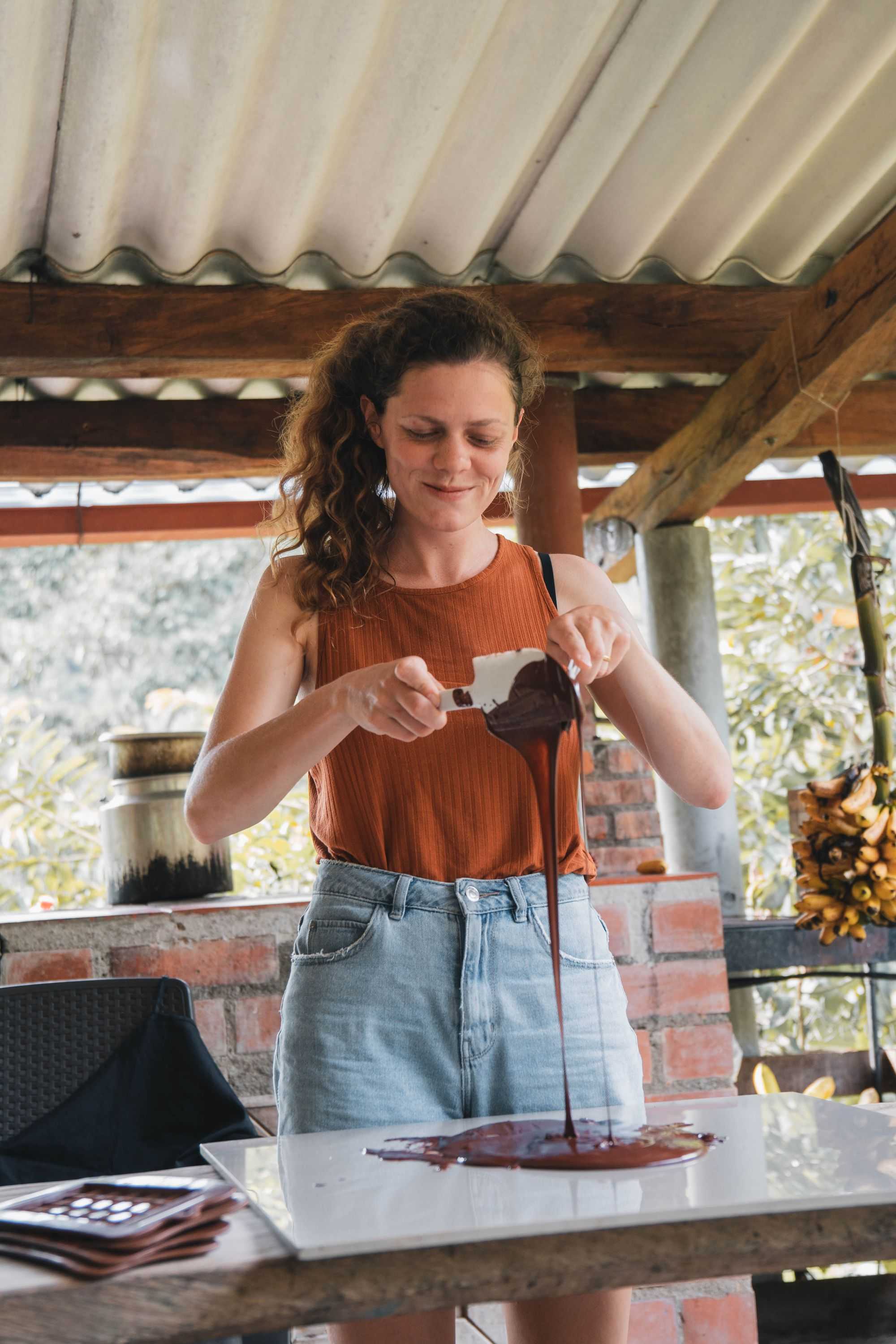
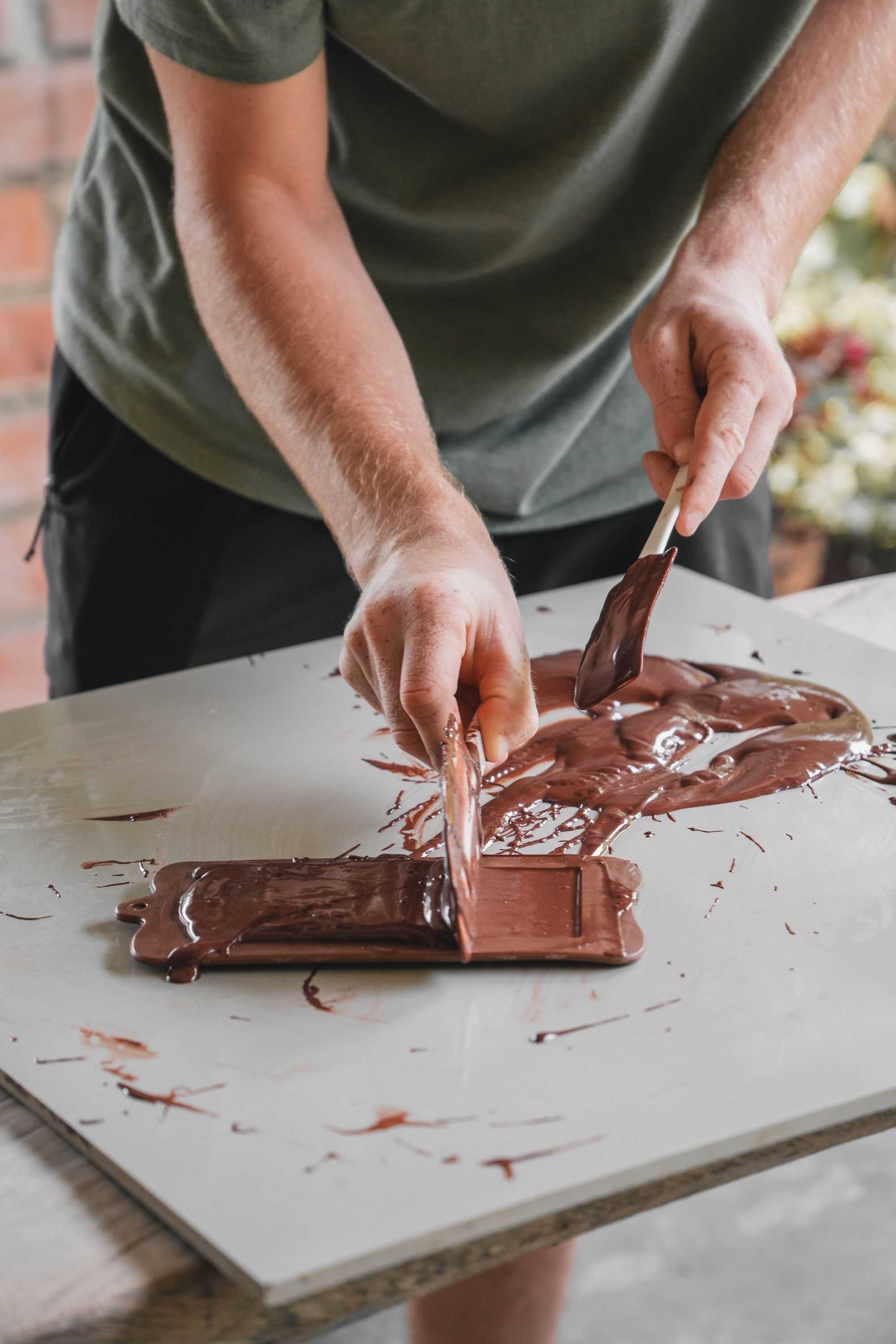
Once again we return to Medellín for an overnight stay, unfortunately not quite as quickly as we had hoped. Our colectivo, which is the name of the small buses that usually only leave when they are full, has problems. Probably a leak in the coolant, we assume as vehicle specialists (irony). After the problem is discovered, the driver has to refill the coolant regularly, but even so we eventually reach the big city amidst a cloud of steam. Before sleeping, we have a funny encounter in our Airbnb, where there is actually a Swiss who comes from exactly the same place where Ben grew up. The world is so big and yet so small.
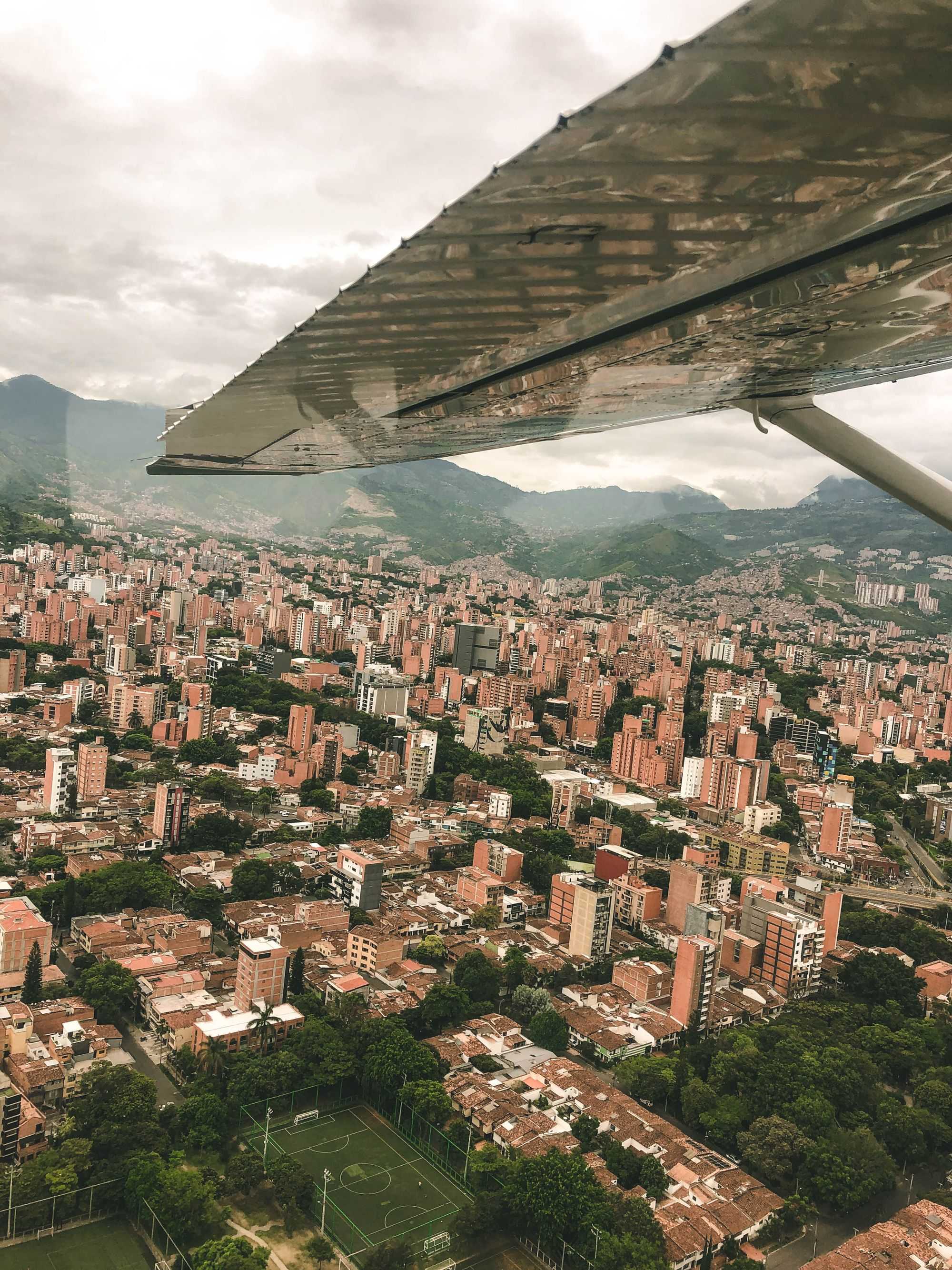
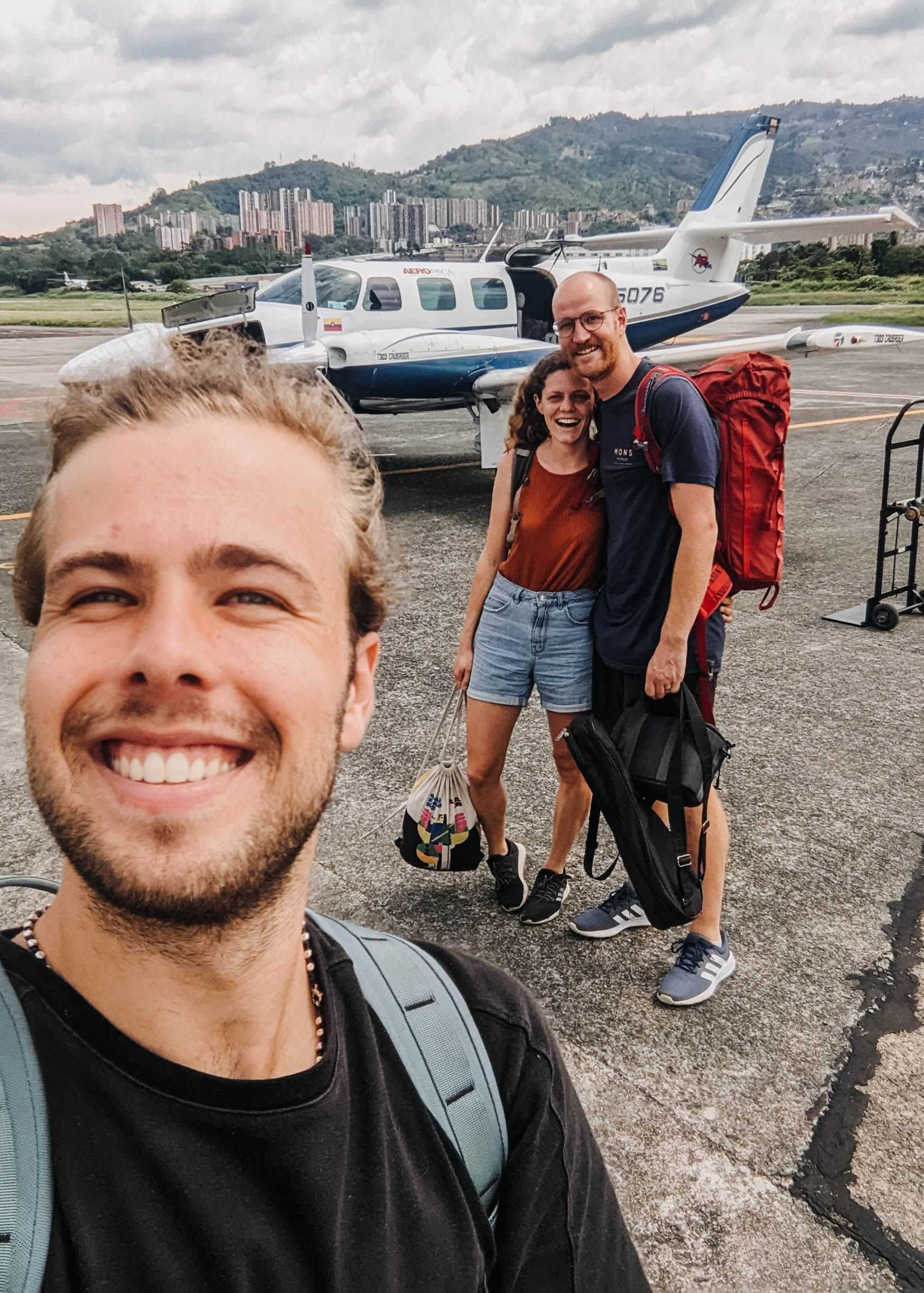
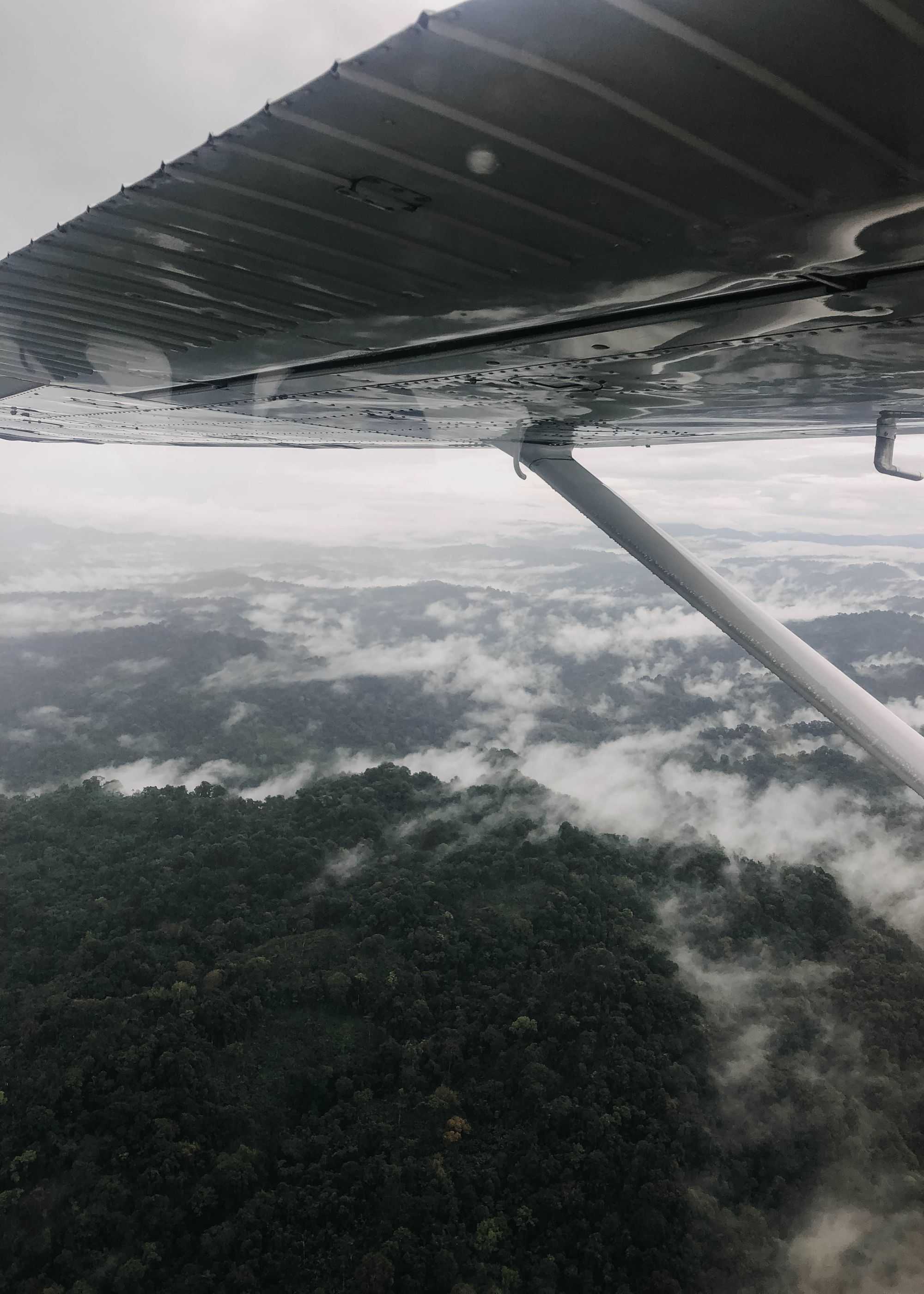
Our last trip to Colombia is already on the agenda, and this one is a real challenge. Since the beginning, a visit to the Pacific coast has been at the top of our wish list, especially for Sara. The coast is hardly accessible by road, so the journey is by air. As you know, this is not the first time either of us has flown, but it will still be a first. When we arrive at the airport, there is no sign of our flight. After some inquiring, someone finds us, hands us simple tickets and leads us through the security check. On the other side, again no information about the flight, but again someone appears and asks us to follow him. Without any idea what exactly is going on, we walk onto the airfield and see our plane, well rather our tiny plane. Including the pilot, it has room for 6 people. We knew beforehand that we were only allowed to take 10kg of luggage and that we would be facing a small plane, but it was a surprise to find it so little. But well, the luggage is stowed, we are seated (the weight has to be distributed evenly) and then we taxi to the runway. A real pleasure. The flight is surprisingly smooth and after circling over Medellín to gain sufficient altitude, we fly over the adjacent range of hills and endless green jungle before coming in for a landing. Welcome to the paradise of Nuquí. The small village itself does not seem very paradisiacal, but we are still going on. After some time, where we stand at the airfield waiting to be picked up, someone shows up again and takes us to the harbour. In a simple boat, we travel for about 40 minutes along the barely built-up coast before we reach our hotel. The place is often visited, especially during the whale season, which only starts in July. We would not have thought that there is so little going on, because we are the only guests in the hotel. But the place is exactly as we hoped. Jungle borders black, lonely beaches and hardly a soul strays to the beach. No mobile phone reception, coconut palms on the doorstep. We are not the biggest sea lovers, but we were looking forward to these quiet days. We spend the days chilling in the hammock, reading, painting, swimming, playing frisbee, eating, walking, taking pictures. The cook spoils us with local food which includes daily fish, fresh fruit juices and of course arepas. Arepas are round corn fritters, which are eaten everywhere in Colombia. The hotel staff also live on site, so we are invited to play frisbee with their children or to play beach volley. We also visit a natural thermal bath and small waterfalls in the middle of the jungle. The days are a real pleasure and after all the travelling it feels good to do little and just relax. After four nights in paradise we fly back, this time a slightly bigger plane and another Swiss guest. A student who is doing his exchange semester in Medellín is also flying with us.
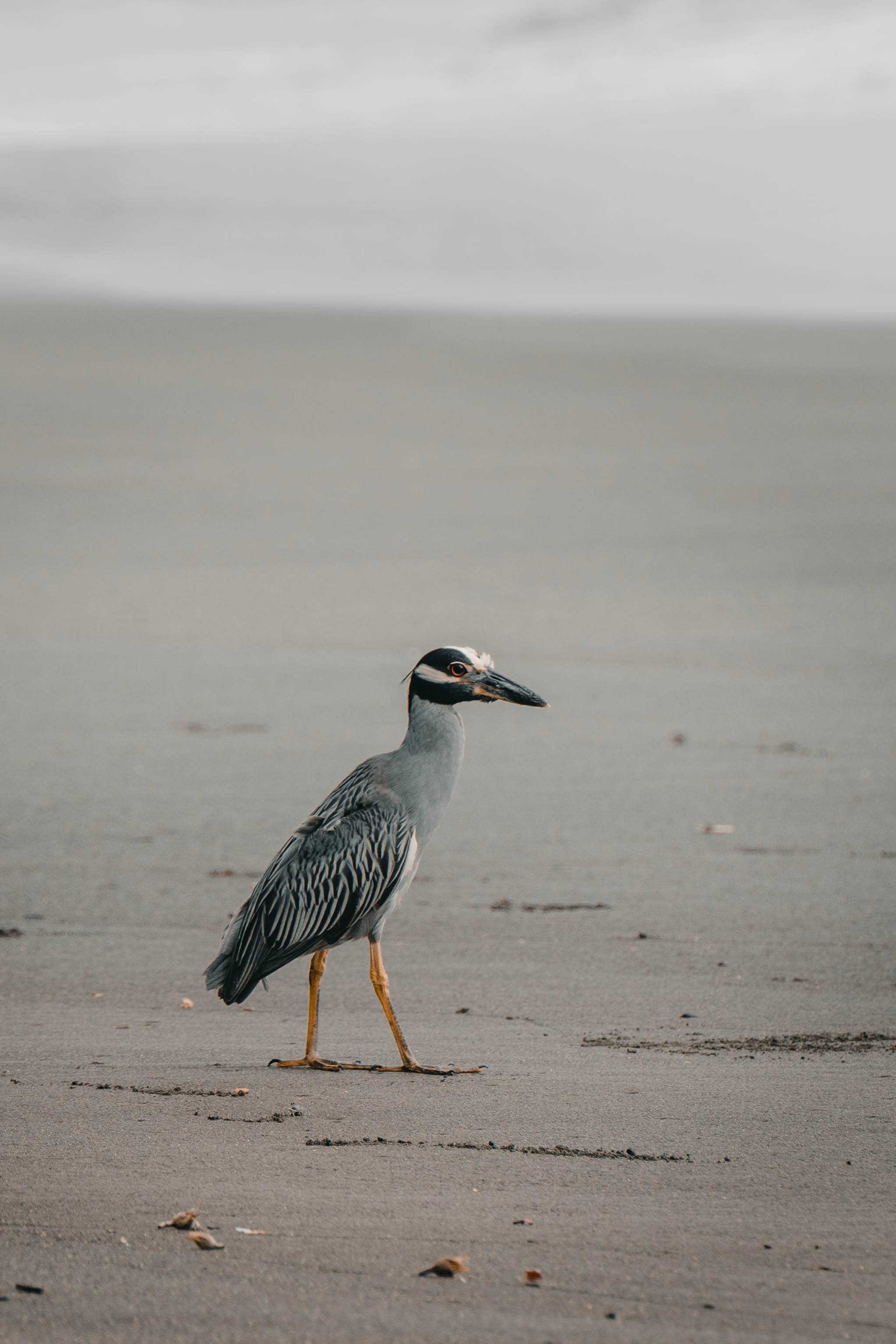
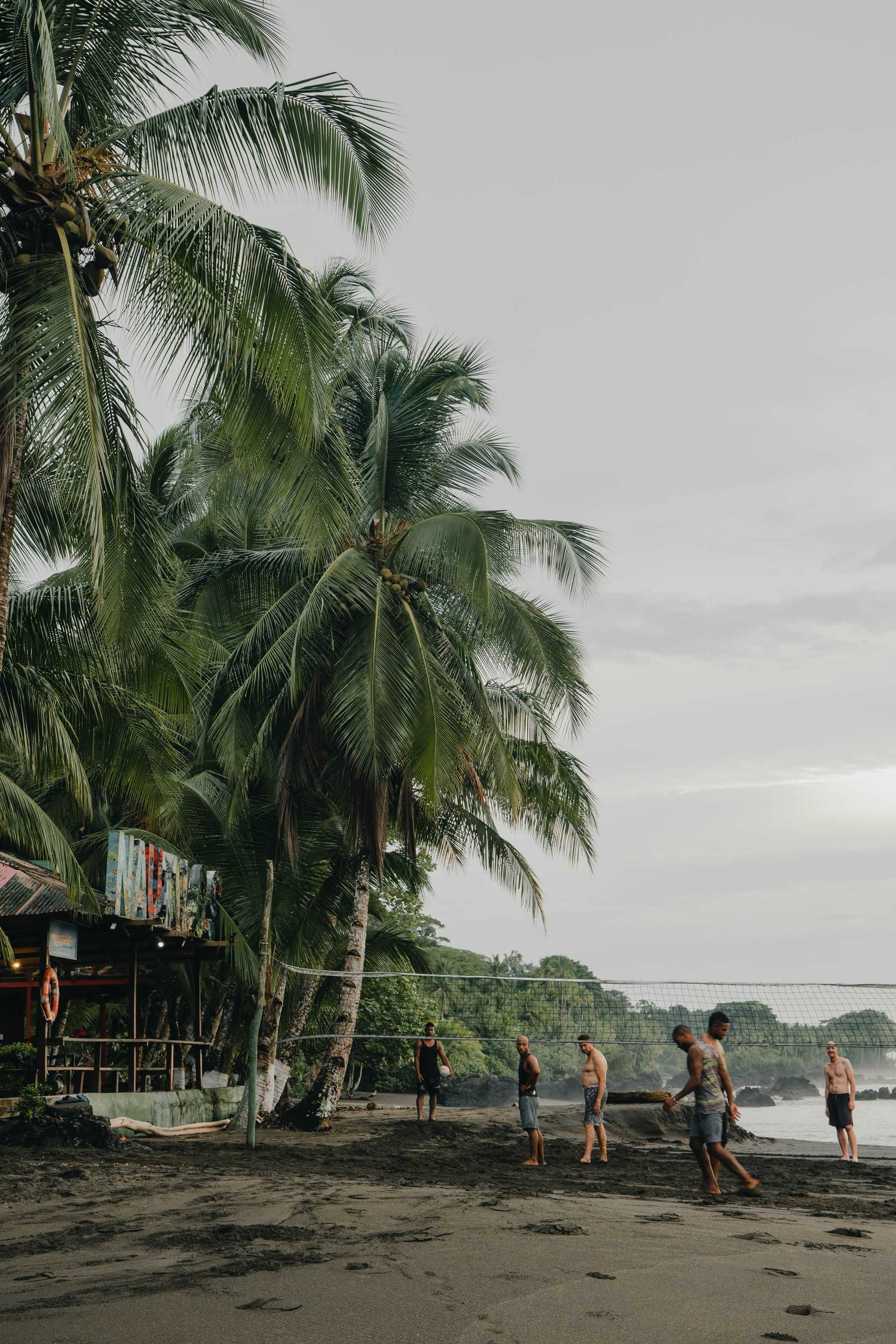
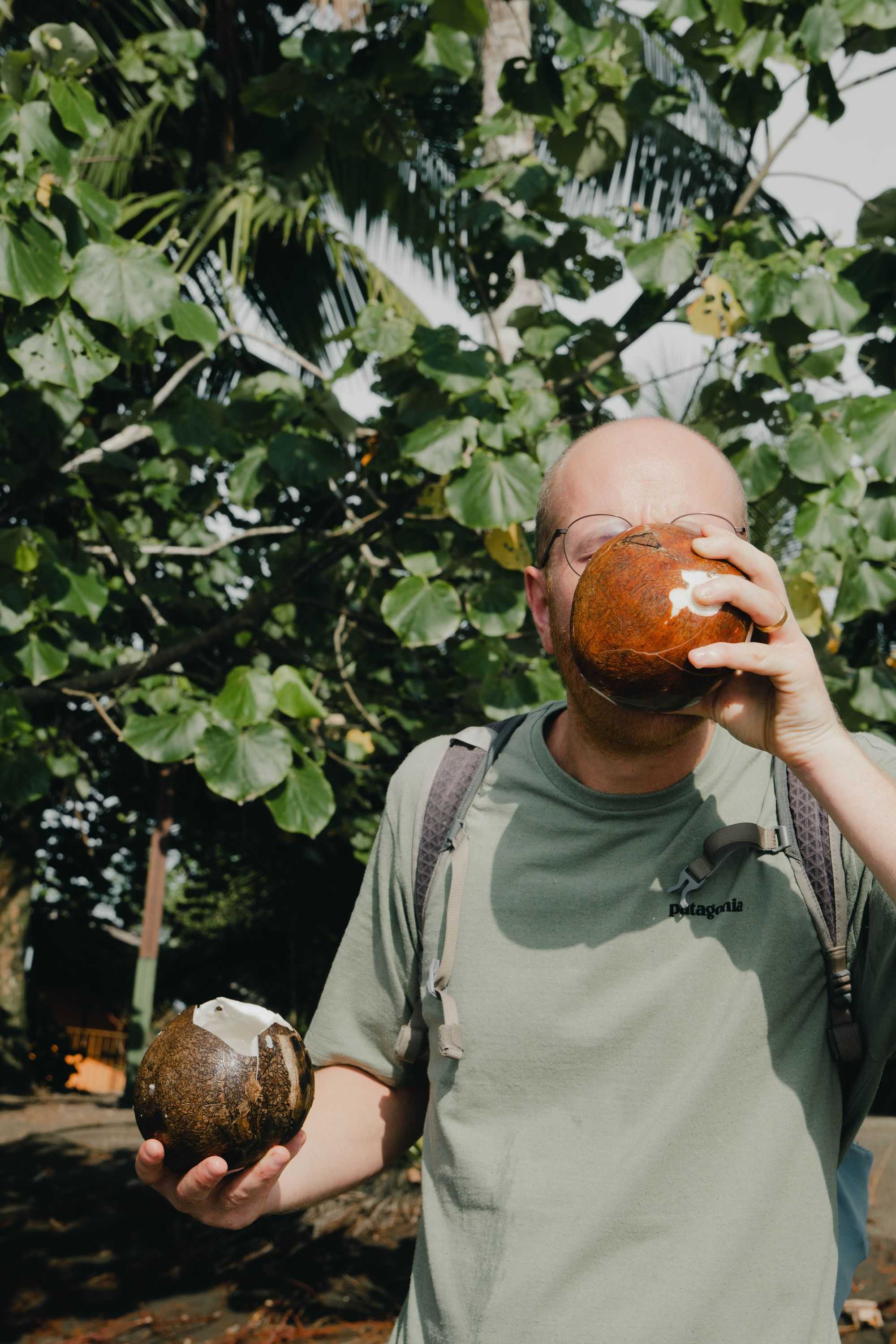
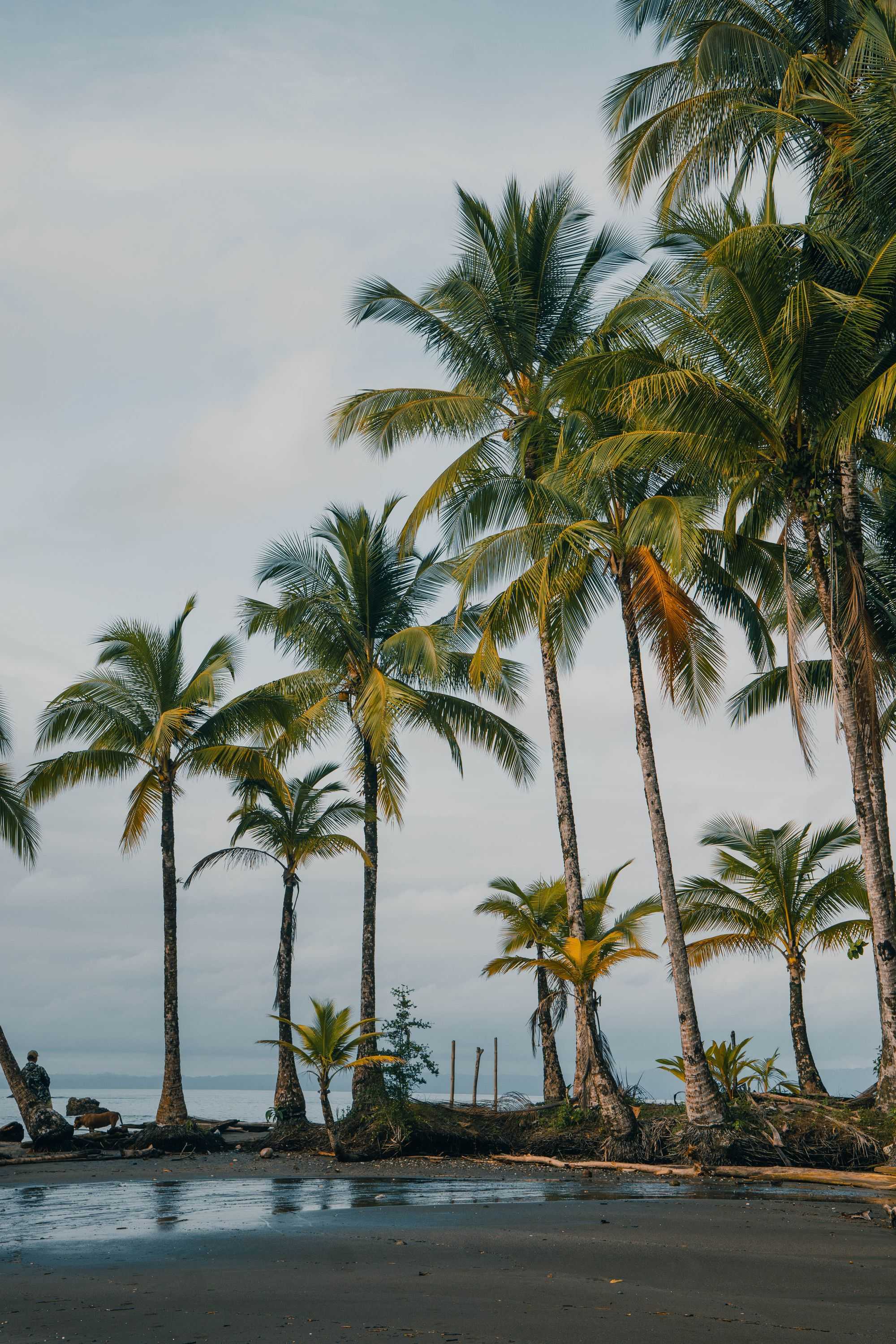
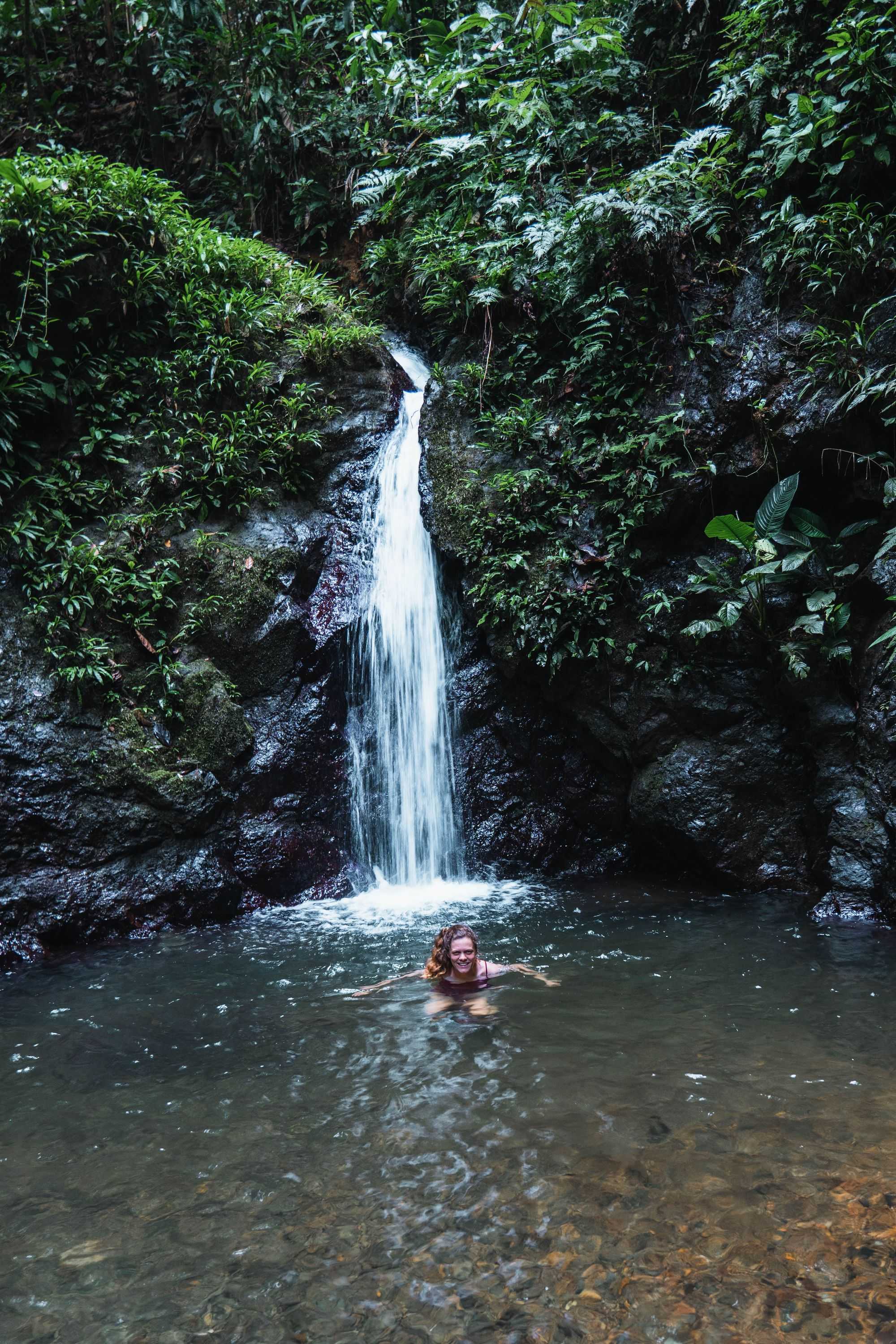
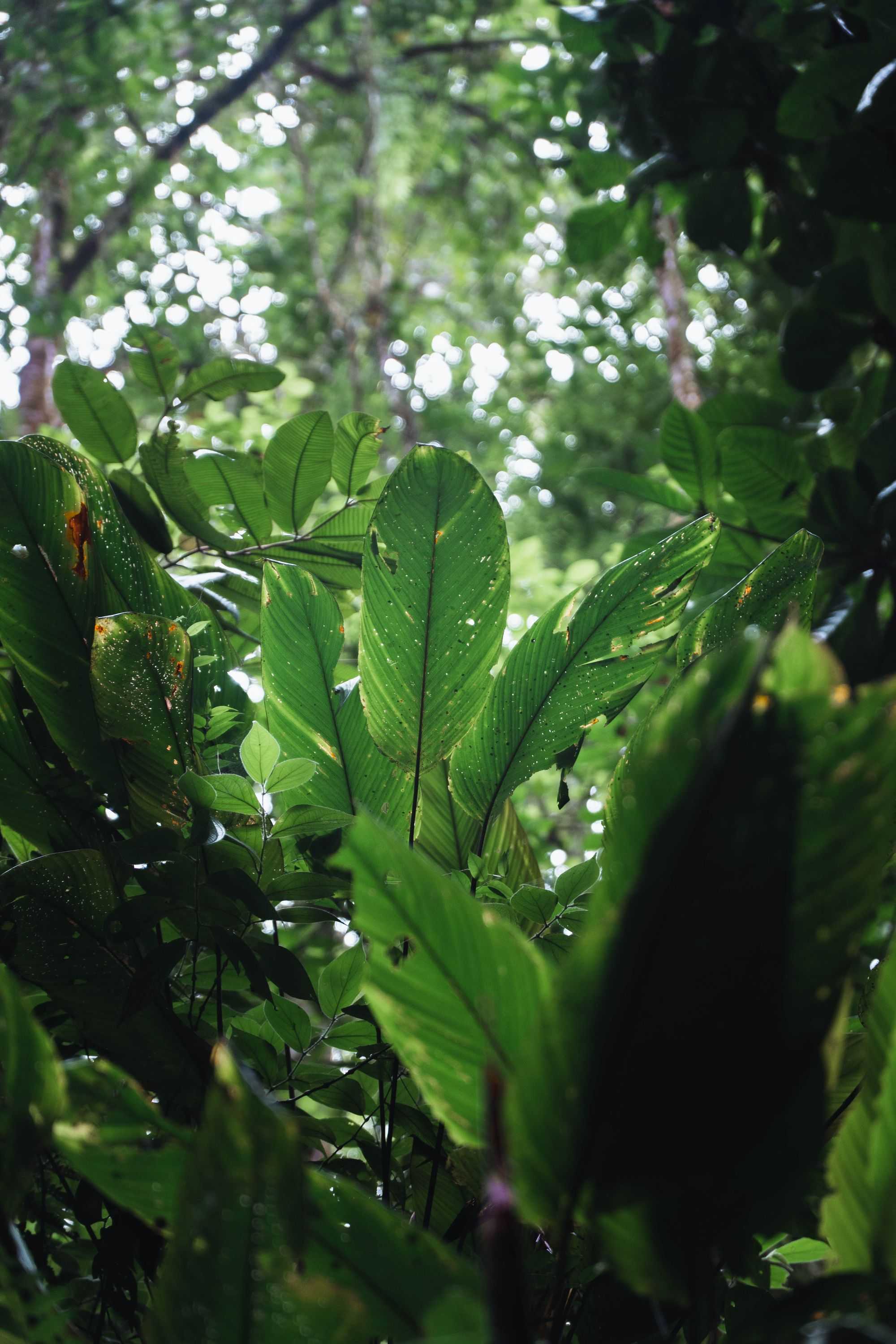
After nature comes the big city jungle. Having already spent two nights in Medellín, we now have a few more days to explore the city, although we take it rather slow. After travelling for so long, we notice that the energy and desire to explore is no longer as great as it was at the beginning. The city has changed enormously in the last 20 years, so that today you can move around quite freely and safely. New, ultra-modern neighbourhoods have been built and the more inaccessible hillside neighbourhoods have been made more accessible with cable cars and escalators, which is one of the keys to the decline in crime. But of course many other factors have contributed to this, and we learn about them on a walking tour through Comuna 13, a prime example of Medellín's progress. The city's residents are proud that their home is now seen as a place of progress and growth, and instead of dwelling on the terrible events of the past, they want to look forward. Of course, there is still crime, drug dealing and mafia, but life has greatly improved for the general public. We also plunge into the midst of life when we visit a football match. Independiente Medellín is playing, one of two city clubs, and we are part of it. Outside the stadium everyone is eating, the atmosphere is relaxed. Inside, a brass band plays continuously, keeping the mood high throughout the game. The fan chants are not just a few simple chants, but whole songs that are sung along at the top of their lungs. Unfortunately, the home team loses, but it was still a highlight. Otherwise, we enjoy the wide range of culinary delights, look for good coffees and plan the last things for our upcoming (llama) adventure in Peru.
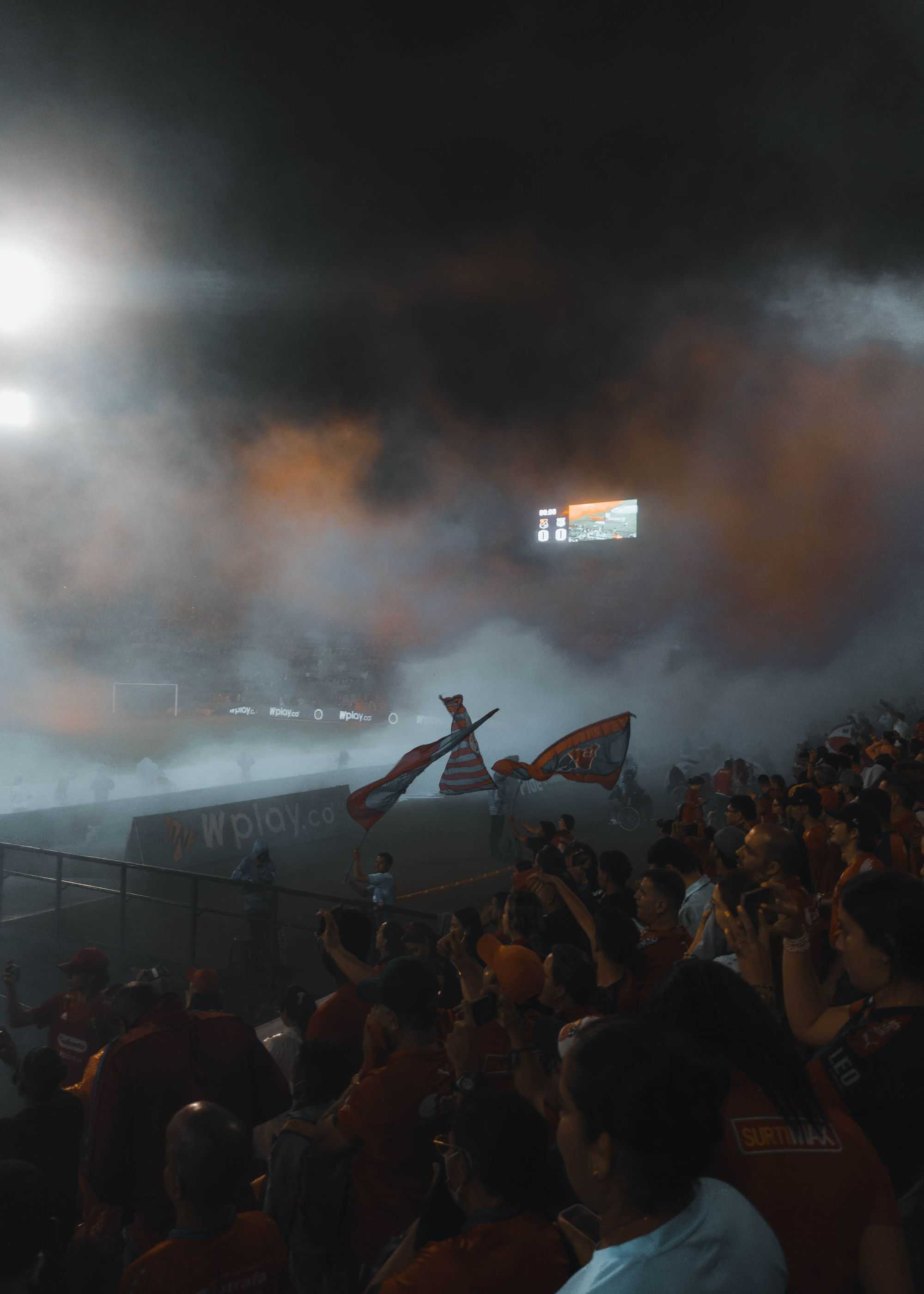
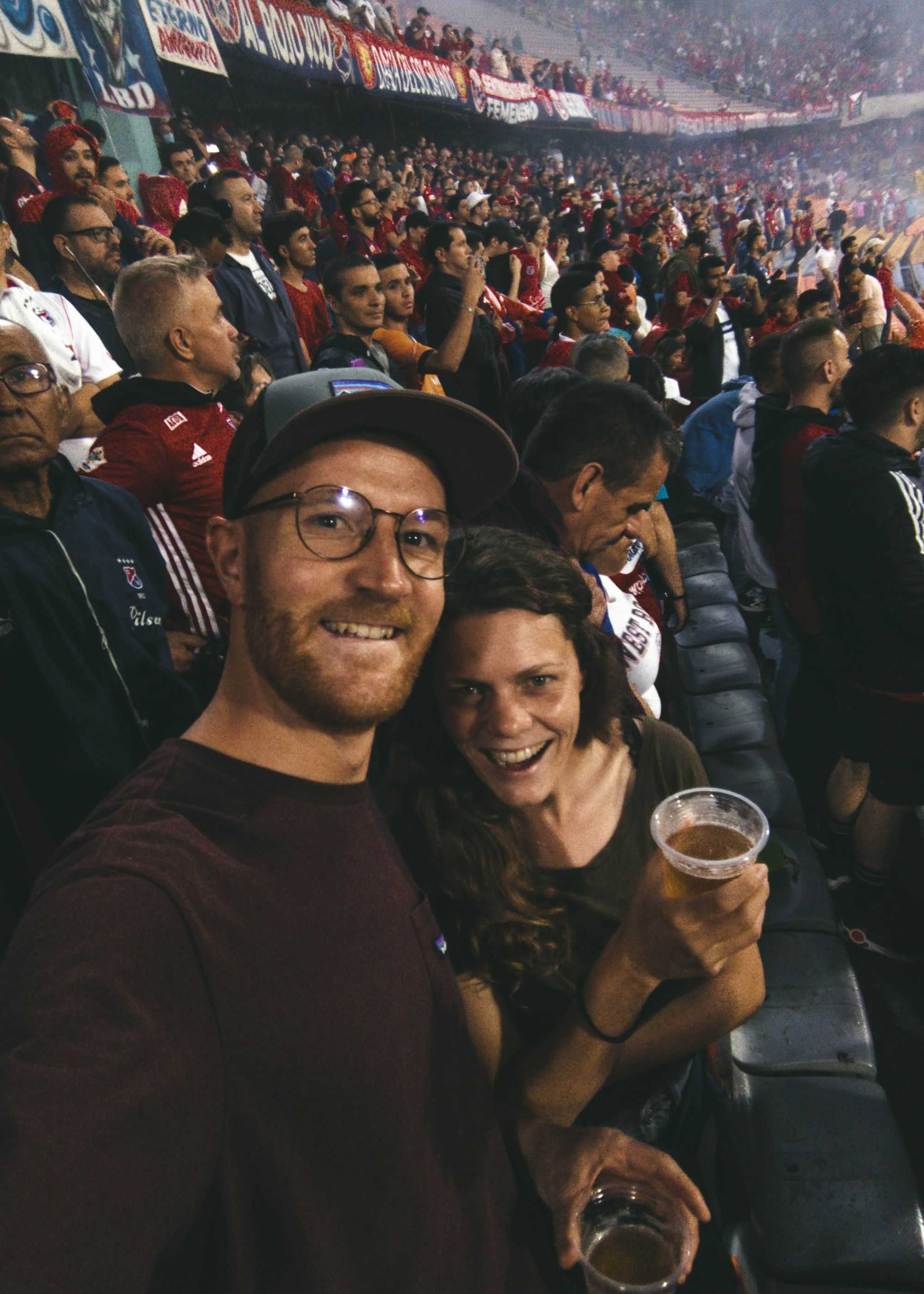
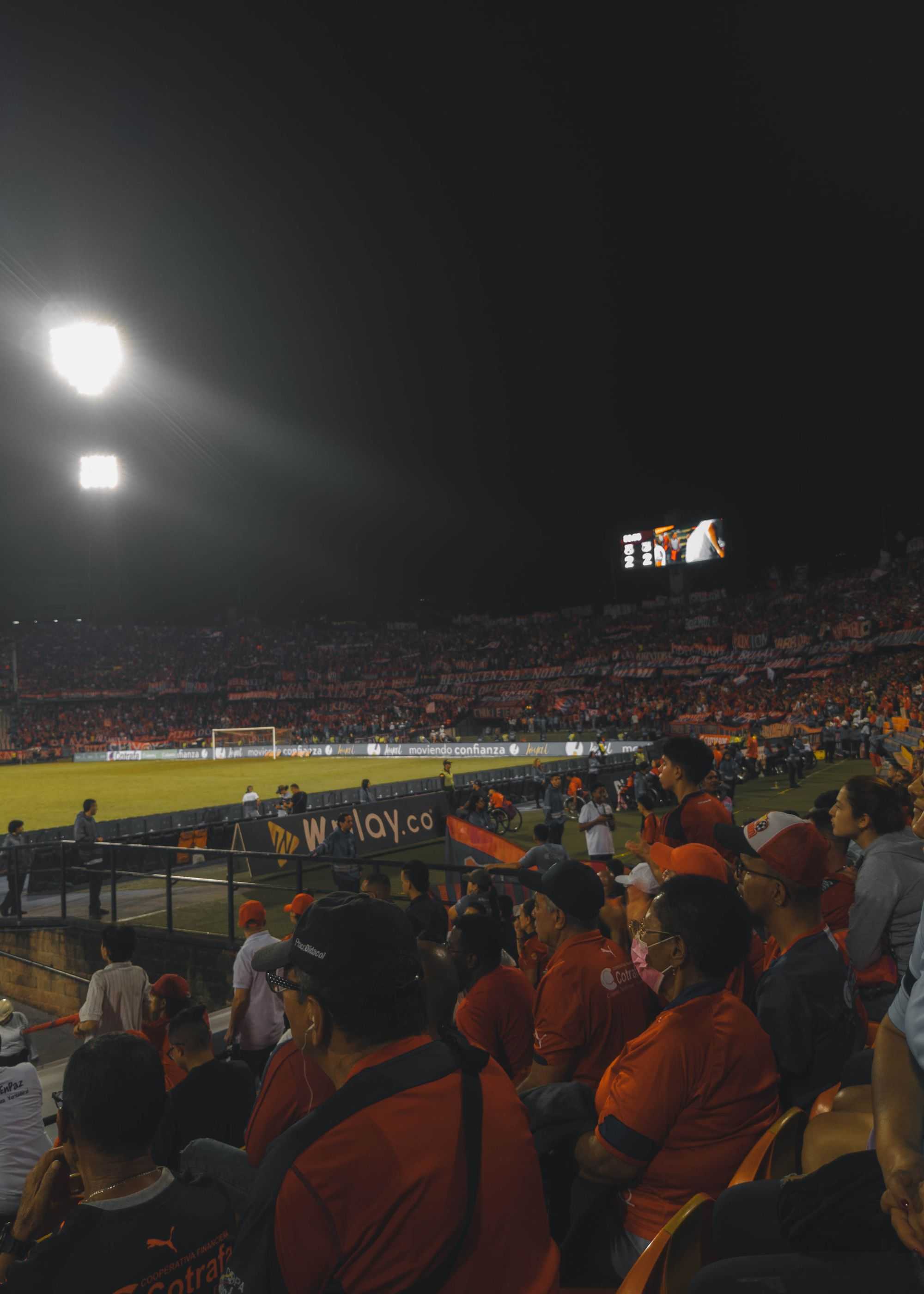
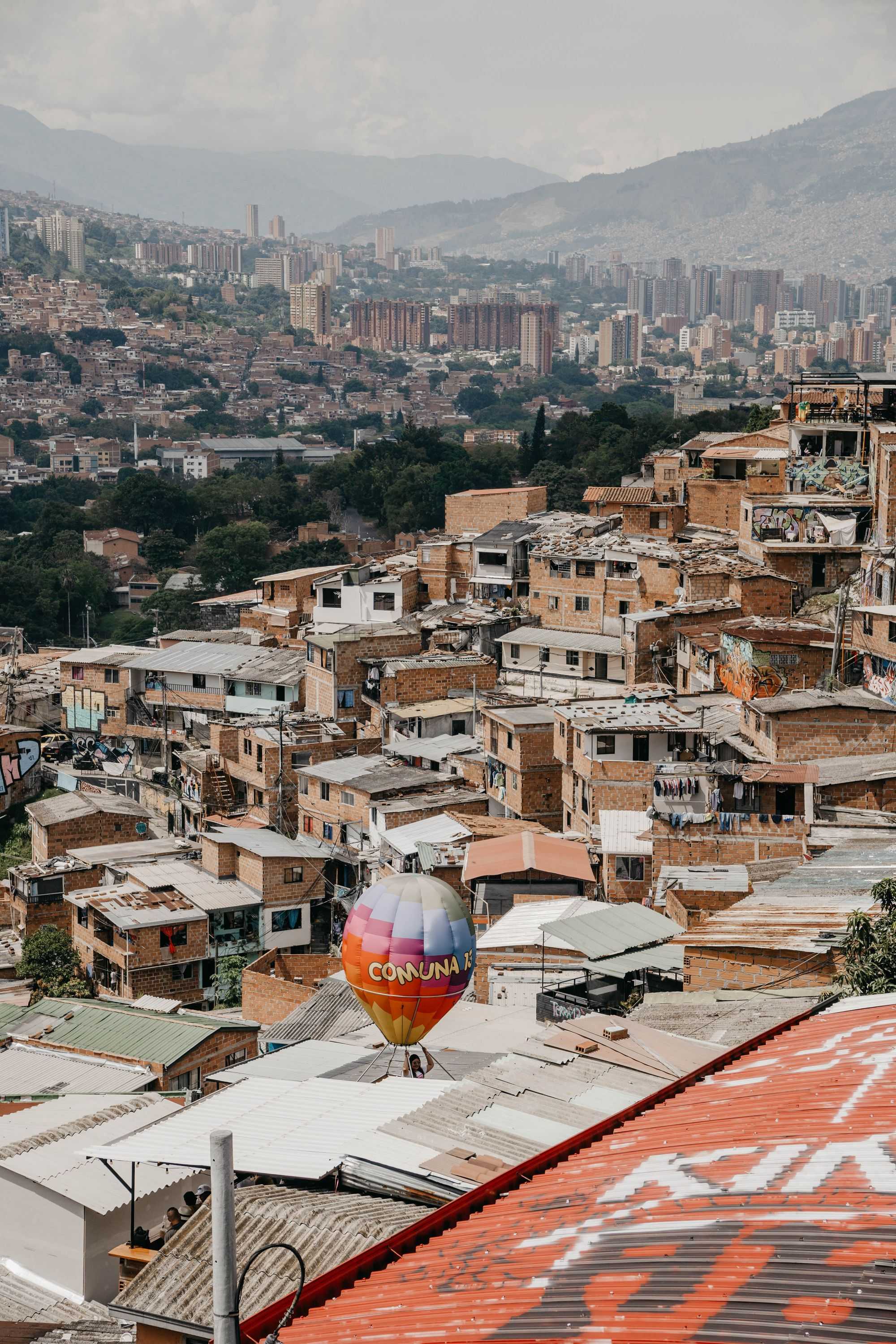
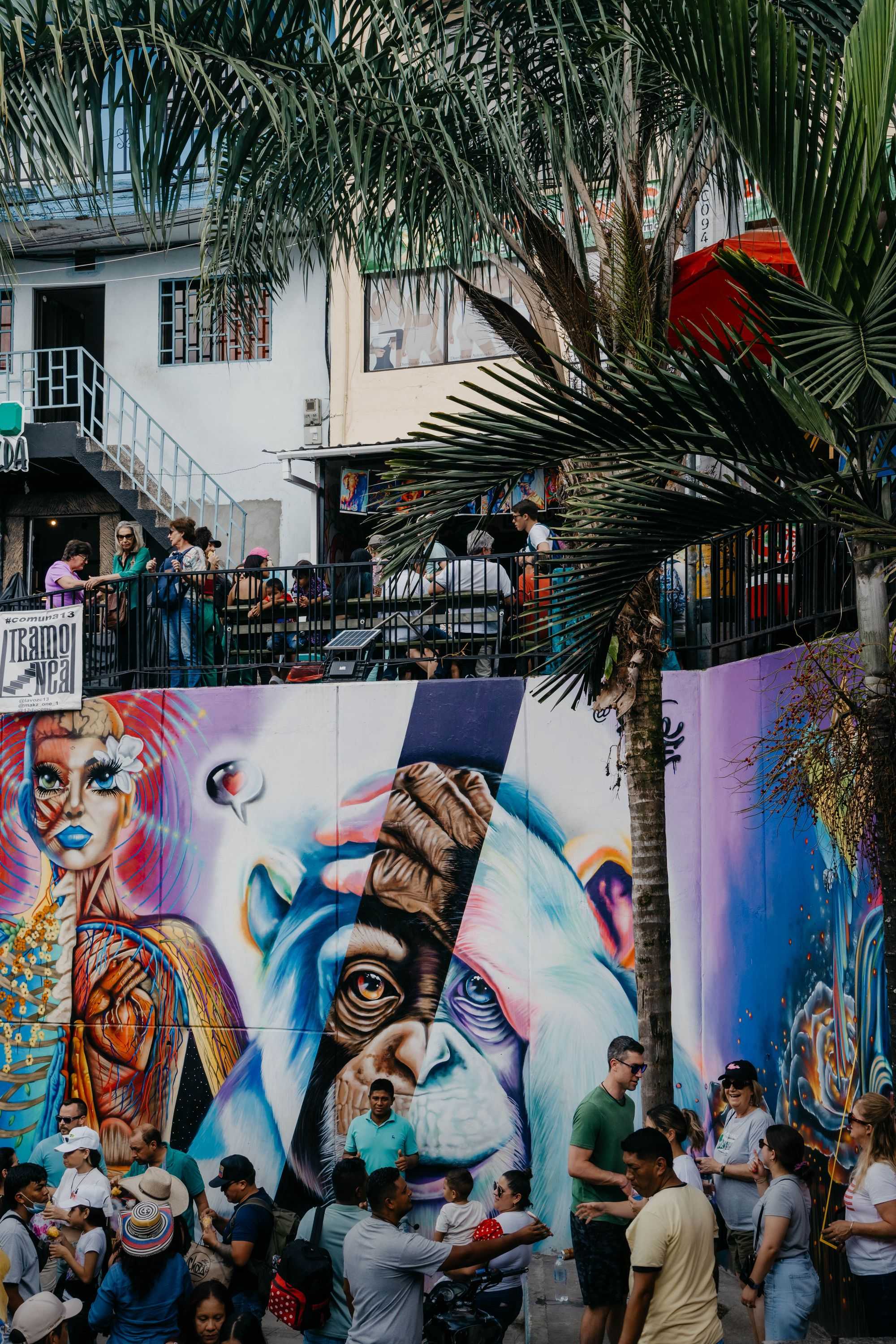
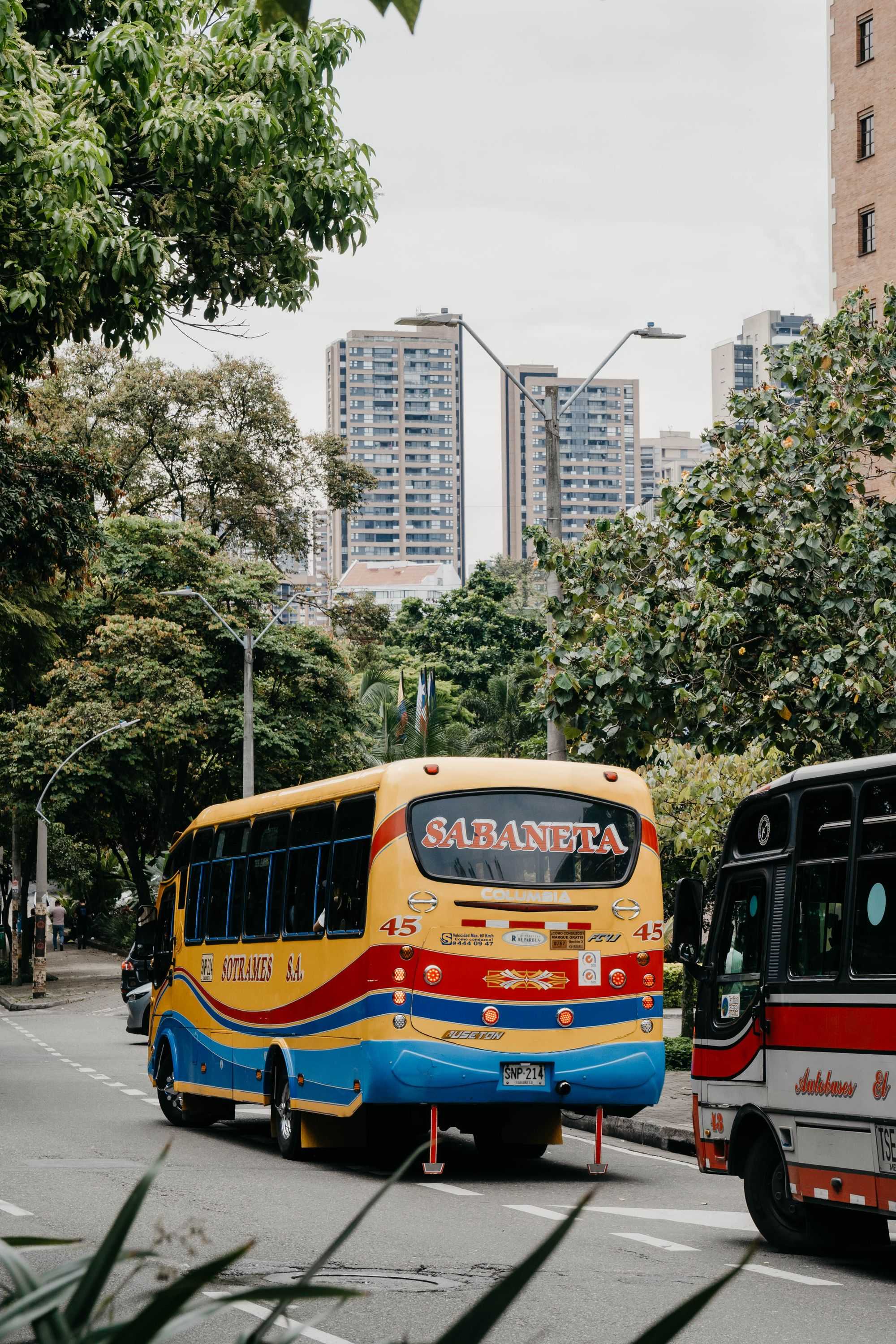
That was it from Colombia. We had just under a month to get a taste of this country. There are still many corners to discover, but this will have to suffice for now. Colombia was a pleasure, allowed us to discover new facets of the continent once again, and here too we cannot rule out the possibility that we will return at some point. With this in mind, hasta luego Colombia!